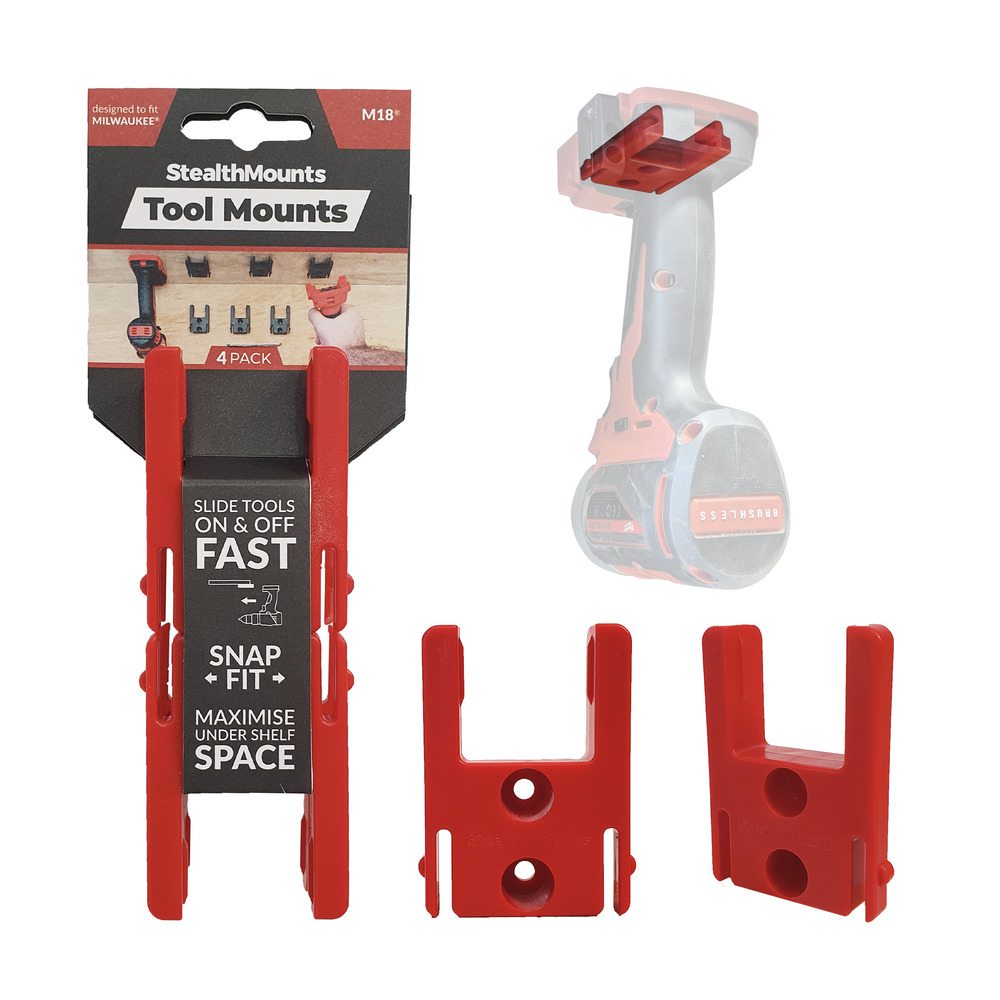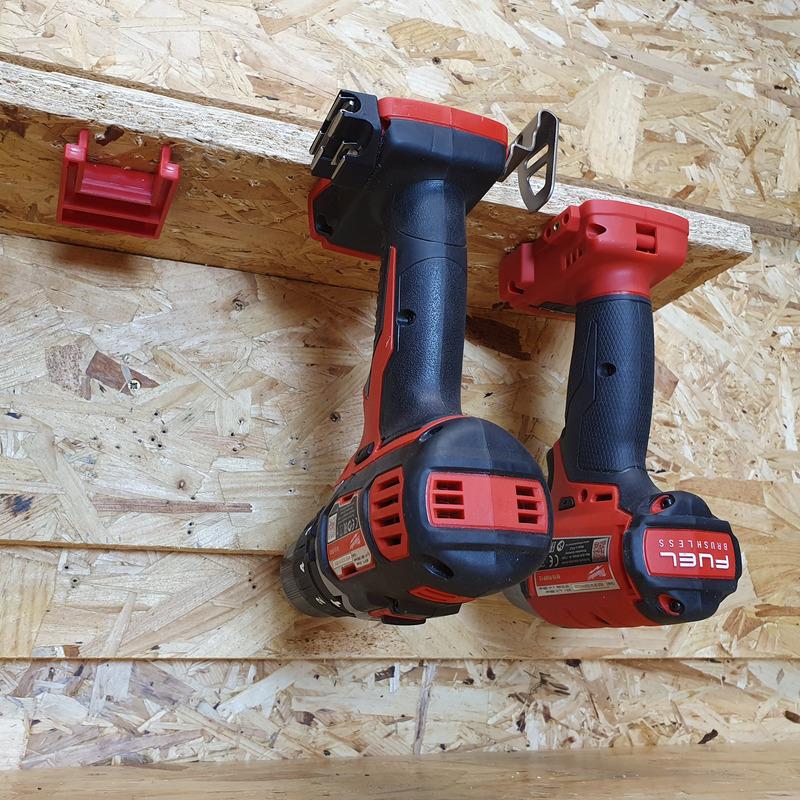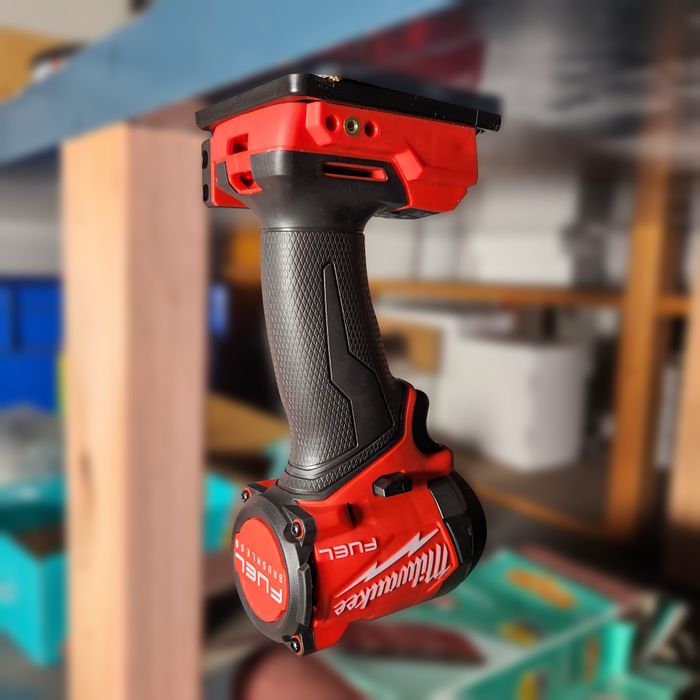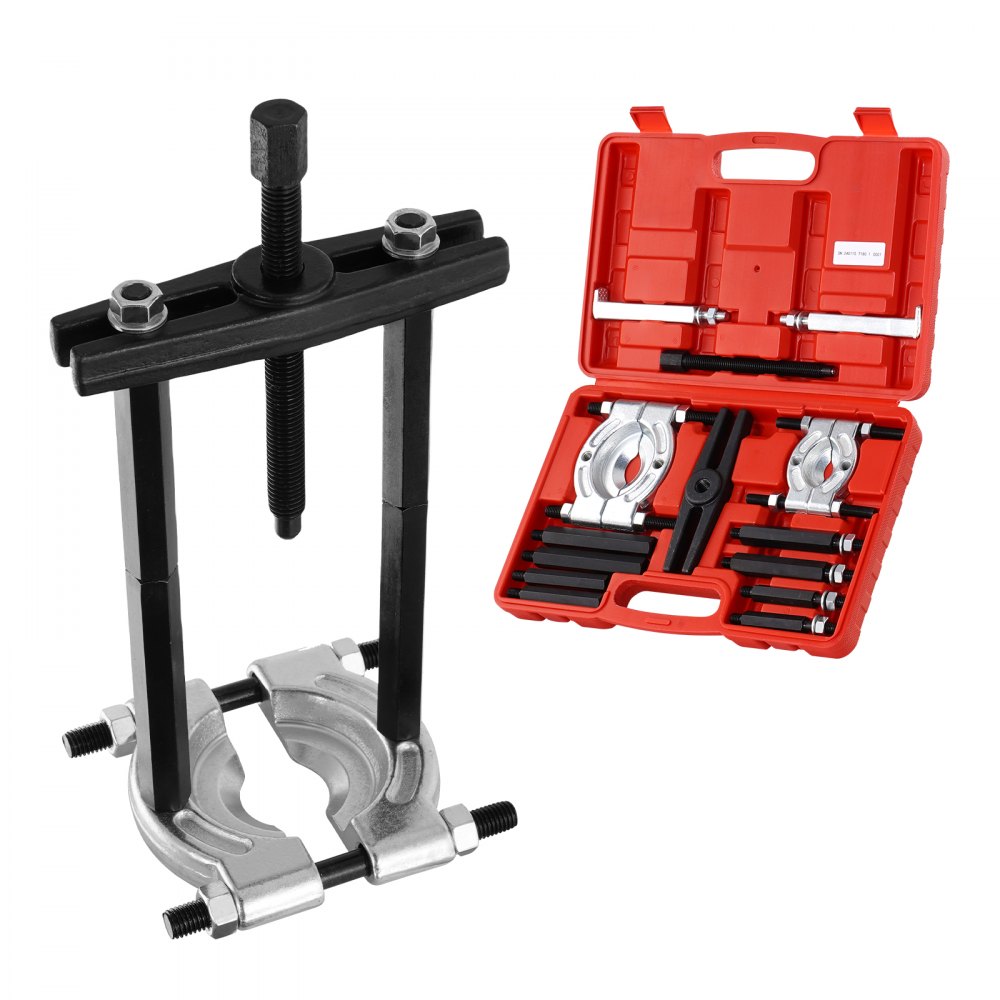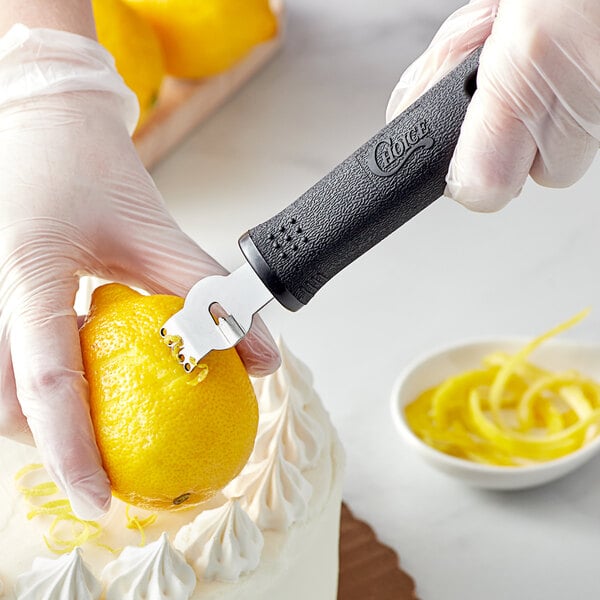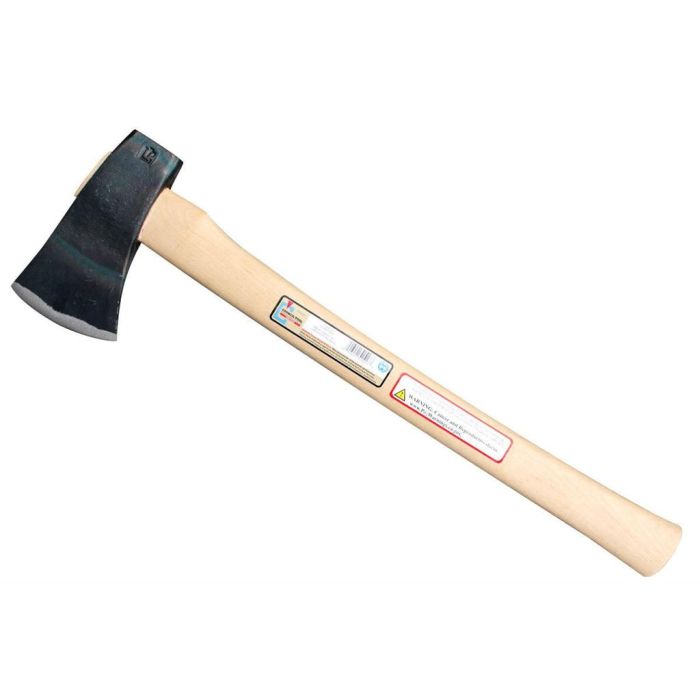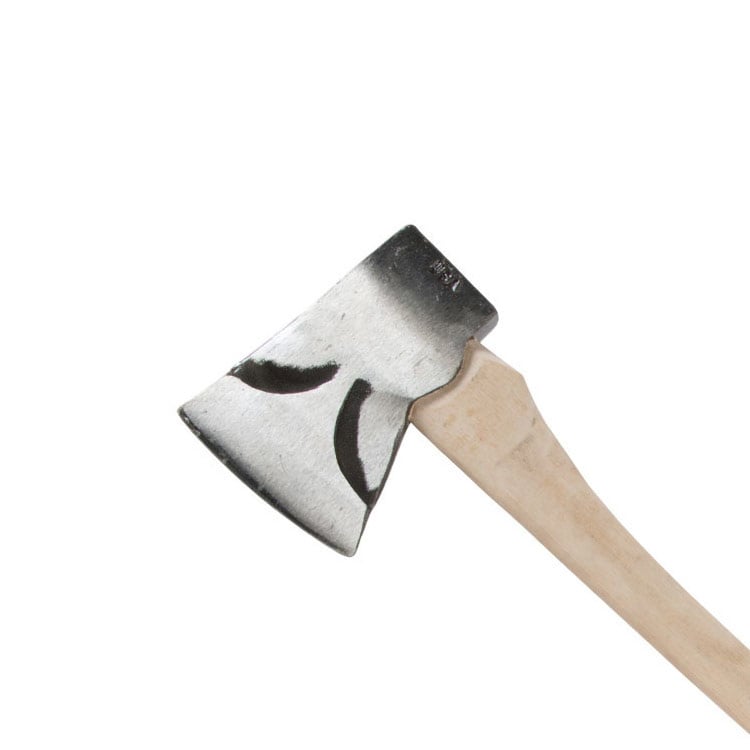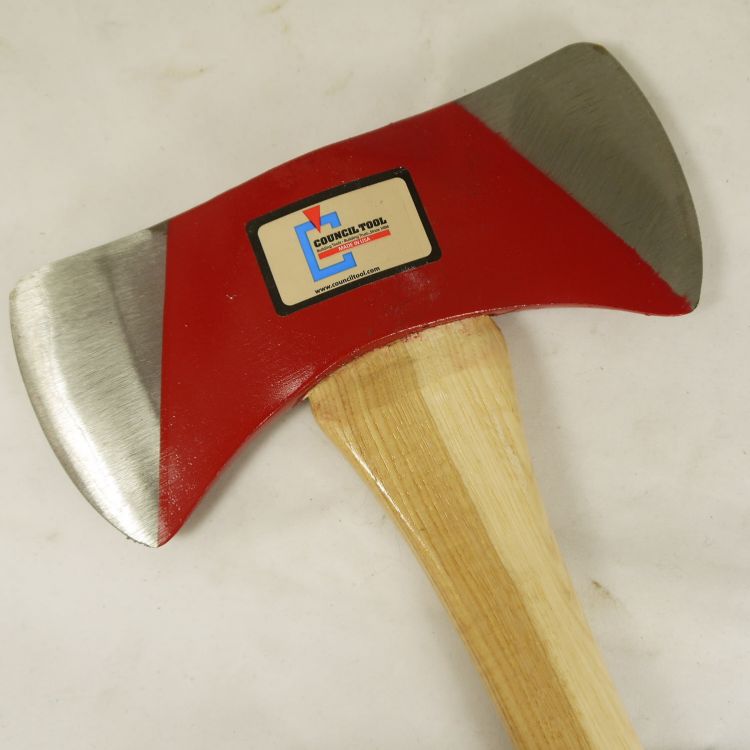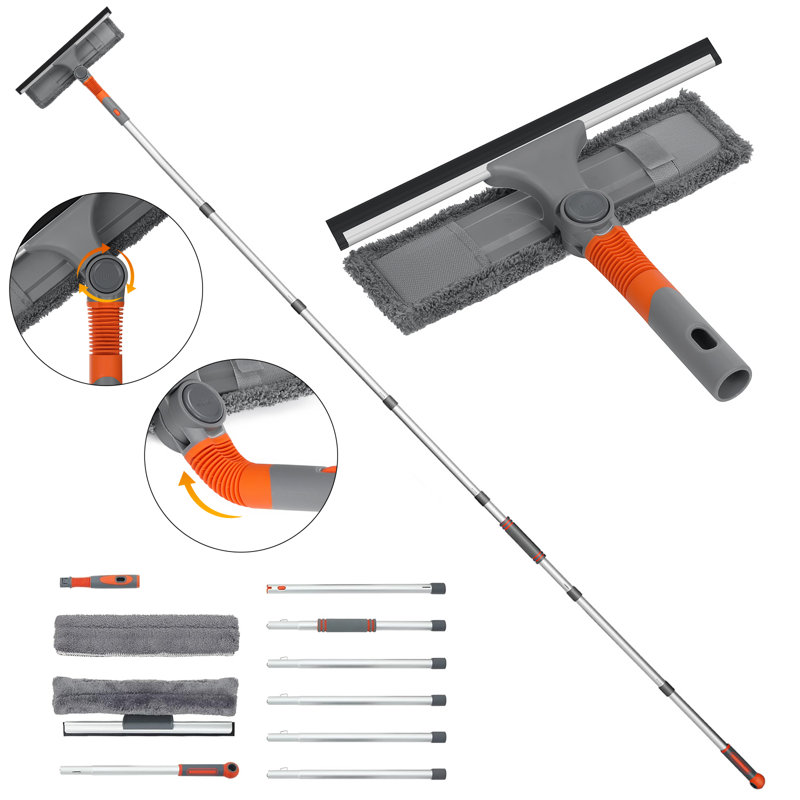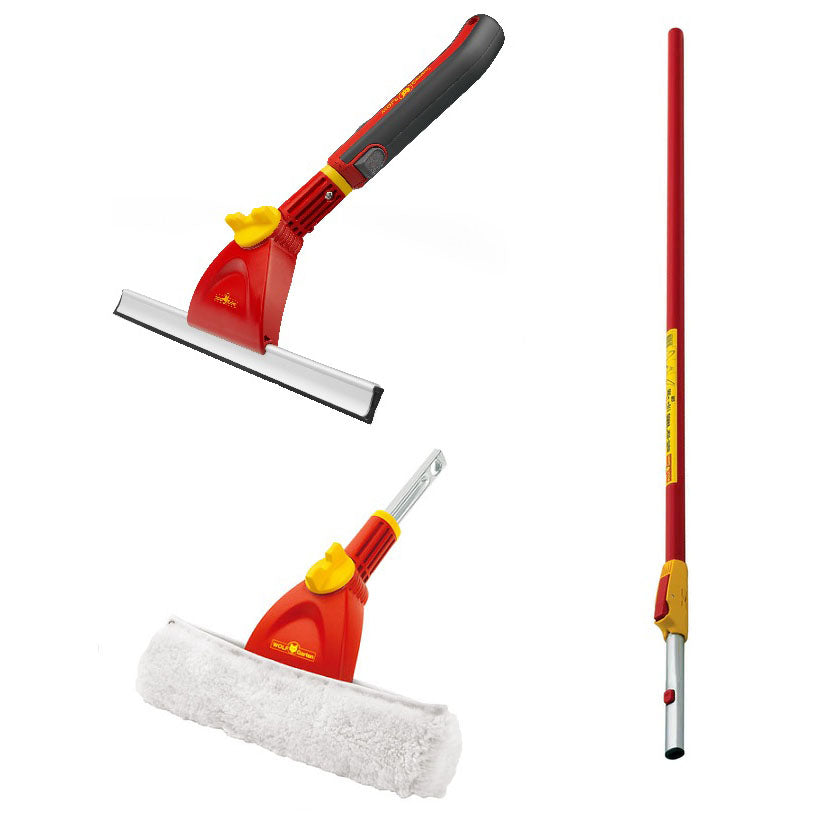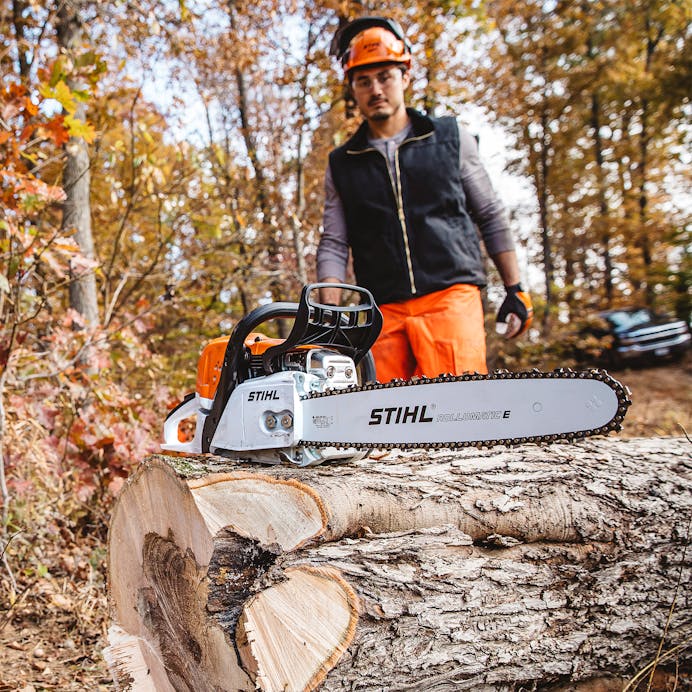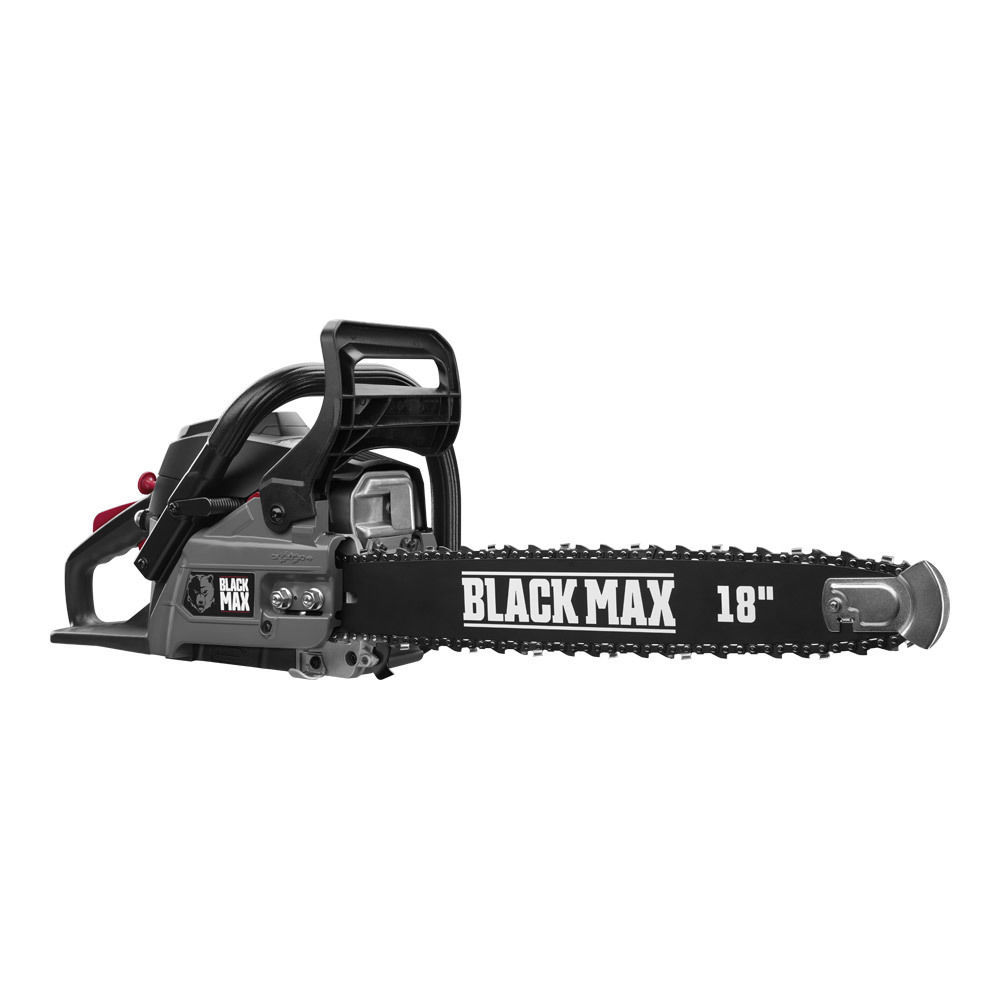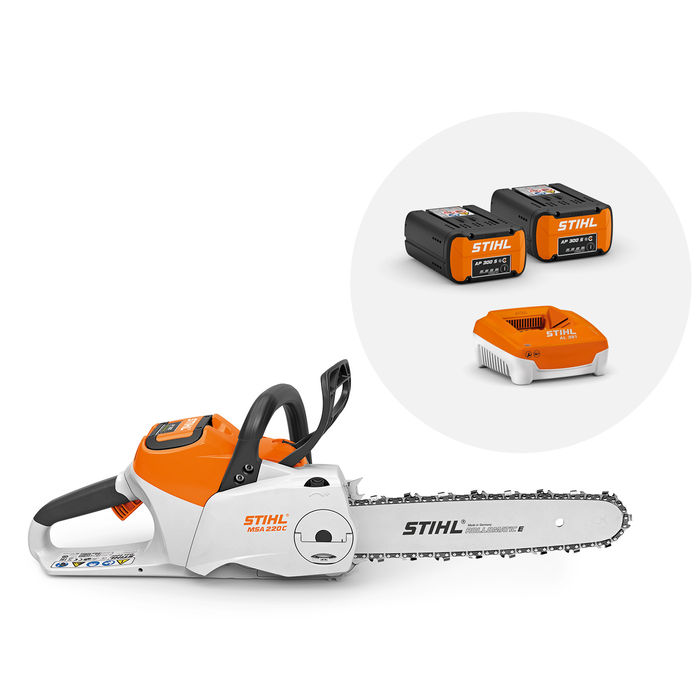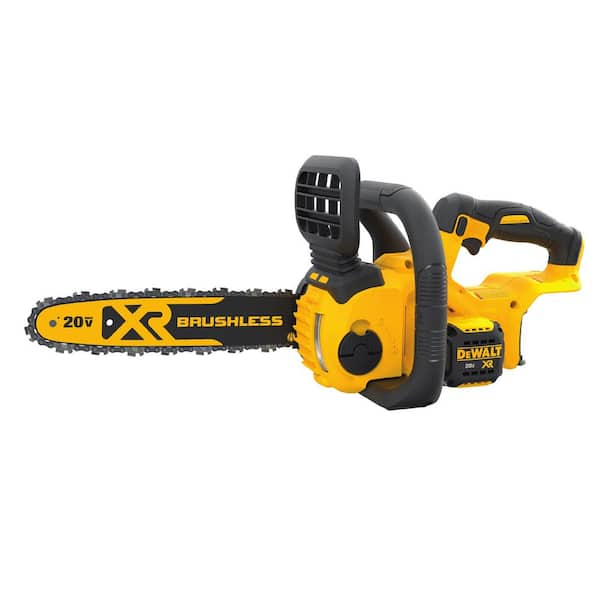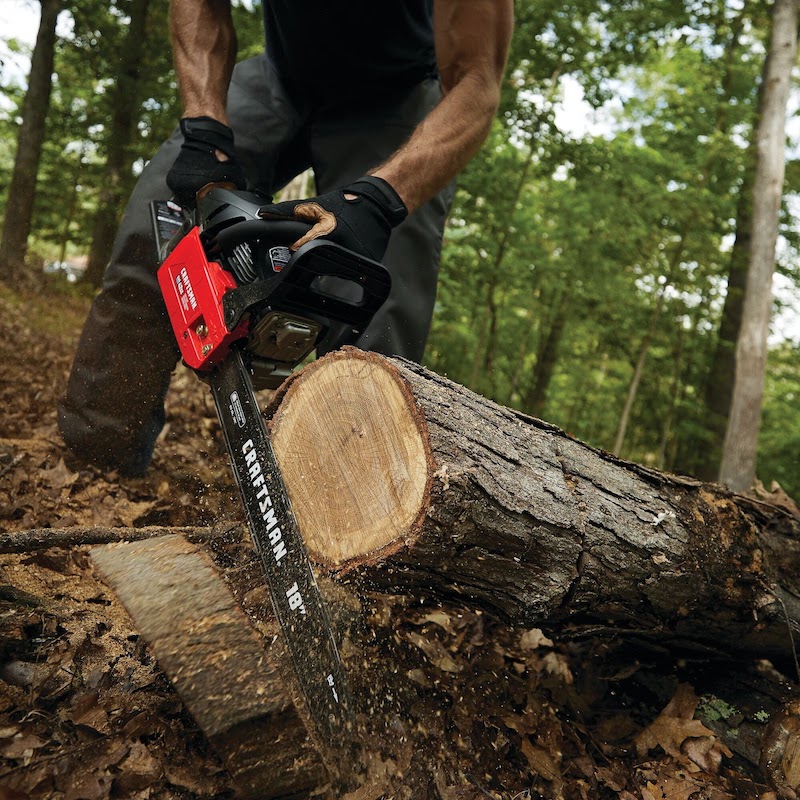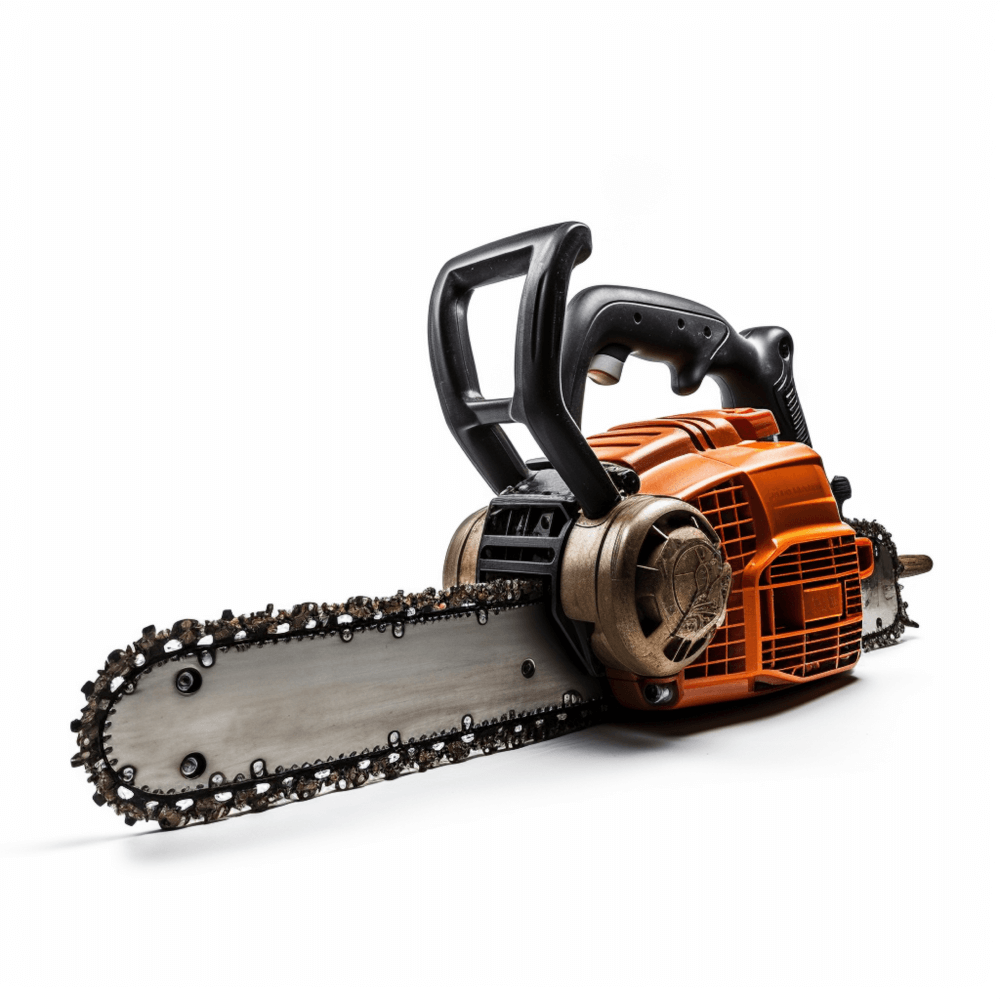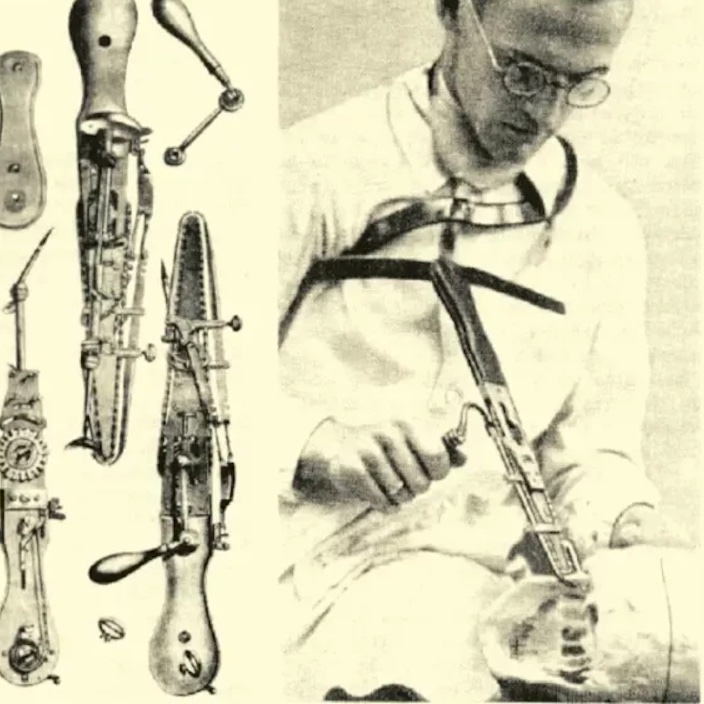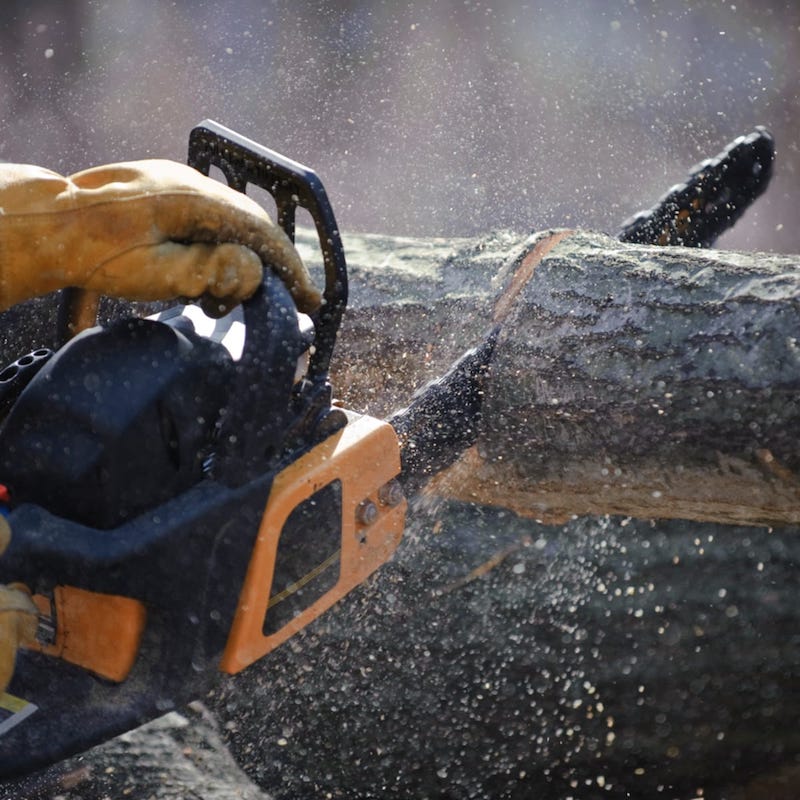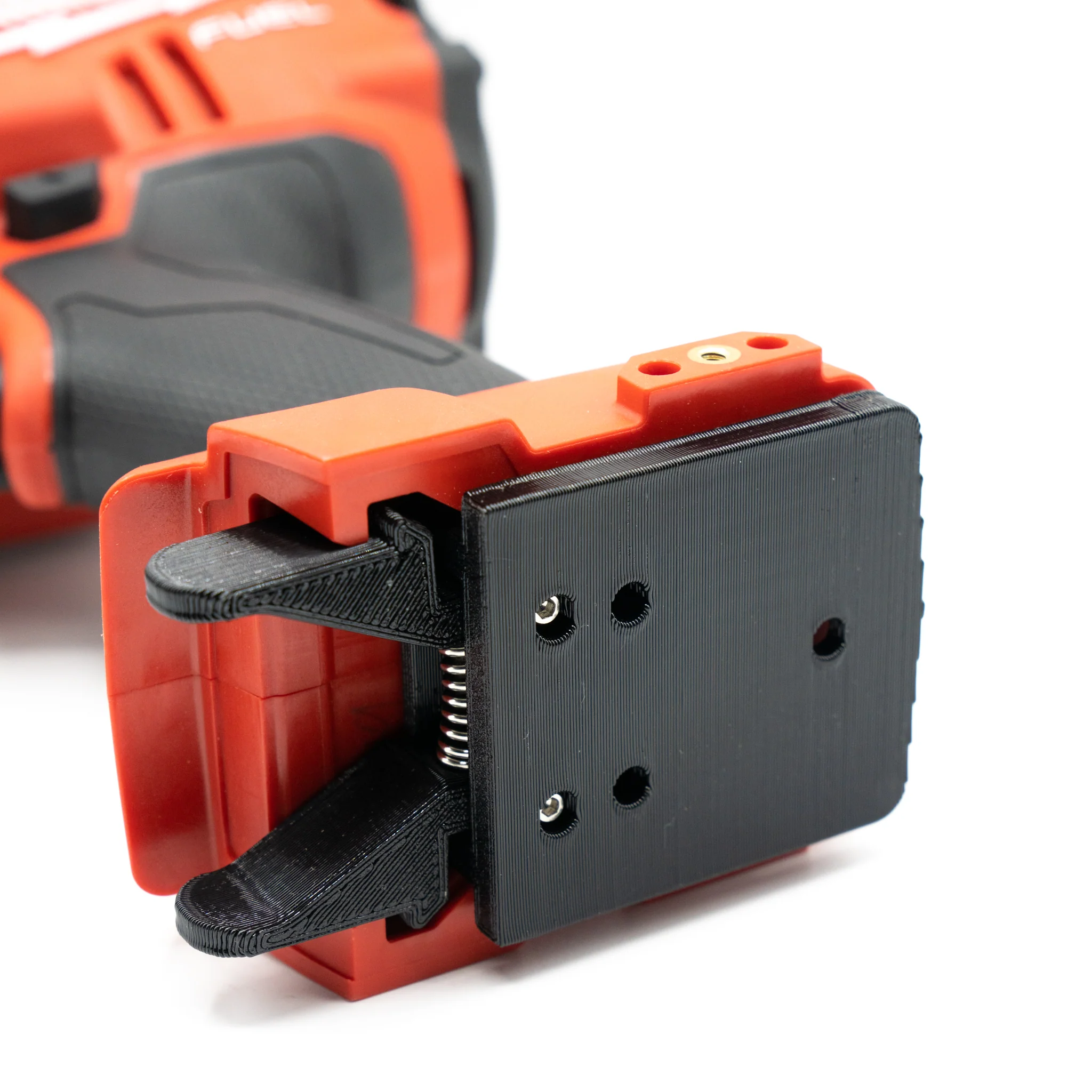
Efficiency and Organization with Milwaukee Tool Holders
Introduction
When it comes to improving efficiency and organization in the workplace, having the right tool holder can make all the difference. Milwaukee Tool is a well-known brand that offers a wide range of tool holders designed to help professionals keep their tools organized, easily accessible, and secure. In this article, we will explore the various types of Milwaukee Tool holders available, their features, benefits, and how they can help you maximize productivity and efficiency on the job.
Part 1: Overview of Milwaukee Tool Holders
Milwaukee Tool offers a diverse range of tool holders to accommodate different types of tools, from power tools to hand tools. These holders can fit seamlessly into the Milwaukee tool storage system. And providing a convenient and secure way to organize and transport tools. Whether you’re a carpenter, electrician, plumber, or general contractor, there’s a Milwaukee Tool holder that’s specifically designed to meet your needs.
Level 1: Types of Milwaukee Tool Holders
- Milwaukee Packout Tool Boxes
- Milwaukee Tool Bags
- Milwaukee Hard Cases
Level 2: Features and Benefits of Milwaukee Tool Holders
- Durable construction to withstand the rigors of the job site
- Customizable interiors to accommodate specific tools and accessories
- Quick and easy access to tools, saving time and improving efficiency
Part 2: Milwaukee Packout Tool Boxes
The Milwaukee Packout system is known for its versatility and durability. The Packout tool boxes can stack and lock together. And making it easy to transport multiple tool boxes at once. These tool boxes are available in various sizes and configurations. Allowing users to create a customized storage solution based on their specific needs.
Level 1: Features of Milwaukee Packout Tool Boxes
- Constructed with impact-resistant polymers for maximum durability
- Metal reinforced corners and locking points for added security
- Modular design for easy stacking and transportation
Level 2: Benefits of Milwaukee Packout Tool Boxes
- Versatile and customizable storage solutions for a wide range of tools and equipment
- Time-saving convenience with easy access to tools and accessories
- Efficient organization and transportation of tools to and from the job site
Part 3: Milwaukee Tool Bags
Milwaukee Tool bags are designed to provide a lightweight and portable storage solution for professionals on the go. These bags feature durable construction, reinforced handles, and ample storage space for tools and accessories. Whether you need a small tool bag for quick jobs or a larger bag for carrying more tools, Milwaukee offers a variety of options to suit your needs.
Level 1: Types of Milwaukee Tool Bags
- Tool tote bags
- Rolling tool bags
- Backpack tool bags
Level 2: Features and Benefits of Milwaukee Tool Bags
- Padded shoulder straps and handles for comfortable transportation
- Water-resistant and durable construction to protect tools from harsh job site conditions
- Multiple external pockets and loops for easy access to frequently used tools and accessories
Part 4: Milwaukee Hard Cases
Milwaukee hard cases are designed to provide maximum protection for tools and equipment. These cases are made with impact-resistant materials and feature customizable foam inserts to keep tools secure and organized. Whether you need a compact case for a few hand tools or a larger case for power tools, Milwaukee offers a range of hard cases to meet your needs.
Level 1: Features of Milwaukee Hard Cases
- Customizable foam inserts to accommodate a variety of tools and accessories
- Durable latches and hinges for secure closure and transportation
- Stackable design for easy storage and organization
Level 2: Benefits of Milwaukee Hard Cases
- Protects valuable tools and equipment from damage during transportation and storage
- Convenient and secure storage for organizing tools and accessories
- Versatile and customizable storage solutions for professionals in various industries
Part 5: The Benefits of Using a Milwaukee Tool Holder
A Milwaukee tool holder offers numerous benefits for professionals and DIY enthusiasts alike. One of the key advantages of using a Milwaukee tool holder is its durability and reliability. Milwaukee tools are known for their high-quality construction and long lifespan, and the tool holder is no exception. It is designed to withstand the rigors of daily use and provide a secure and stable storage solution for your tools.
Additionally, a Milwaukee tool holder can help you stay organized and efficient in your workspace. By keeping your tools neatly stored and easily accessible, you can save time and effort while working on projects. This can lead to increased productivity and a smoother workflow, ultimately resulting in a higher quality of work.
Furthermore, a Milwaukee tool holder can enhance safety in the workplace. By providing a designated place for each tool, it reduces the risk of accidents and injuries caused by misplaced or scattered tools. Overall, the benefits of using a Milwaukee tool holder are clear: increased durability and reliability, improved organization and efficiency, and enhanced safety. Whether you are a professional tradesperson or a DIY enthusiast, investing in a Milwaukee tool holder can have a positive impact on your work and workspace.
Part 6: How to Choose the Right Milwaukee Tool Holder for Your Needs
When it comes to choosing the right Milwaukee tool holder for your needs, there are several factors to consider. The first thing to think about is the number and type of tools you need to store. If you have a large collection of tools, you may need a larger tool holder with multiple compartments and pockets. On the other hand, if you only have a few essential tools, a smaller, more compact tool holder may be sufficient.
Another important consideration is the material and construction of the tool holder. Milwaukee tool holders are available in a variety of materials, including nylon, canvas, and leather. Each material has its own advantages and drawbacks, so it’s important to choose the one that best fits your needs and preferences. For example, a leather tool holder may offer superior durability and protection for your tools, while a nylon tool holder may be more lightweight and easy to carry.
Additionally, you should consider the portability and storage options of the tool holder. If you need to transport your tools to different job sites, a tool holder with a comfortable and adjustable shoulder strap may be ideal. Alternatively, if you work in a fixed location, a tool holder with a sturdy handle and hanging loops for easy storage may be more appropriate.
Part 7: Maintaining and Caring for Your Milwaukee Tool Holder
Just like your tools, your Milwaukee tool holder requires regular maintenance and care to ensure its longevity and performance. By following a few simple tips, you can keep your tool holder in top condition and enjoy its benefits for years to come.
One of the most important aspects of maintaining your Milwaukee tool holder is keeping it clean and free of debris. After each use, take the time to inspect the tool holder for any dirt, dust, or residue and clean it thoroughly with a soft brush or damp cloth. This will prevent the accumulation of grime and extend the life of the material.
Additionally, it’s a good idea to inspect the stitching, zippers, and other hardware regularly to ensure that they are in good condition. If you notice any loose threads, fraying, or damage, take the time to repair or reinforce them as needed to prevent further wear and tear.
Furthermore, if your tool holder is made of leather or other natural materials, consider applying a protectant or conditioning treatment periodically to keep the material supple and resistant to cracking or fading. Be sure to follow the manufacturer’s instructions for the specific type of material and treatment to avoid damaging the tool holder.
Finally, when storing your Milwaukee tool holder, try to keep it in a dry, cool location to prevent mold, mildew, or other damage. If you need to store it for an extended period, consider wrapping it in a soft cloth or placing it in a protective cover to shield it from dust and other contaminants.
By following these simple tips and taking the time to care for your Milwaukee tool holder, you can extend its lifespan and preserve its functionality, ensuring that it continues to serve as a reliable and secure storage solution for your tools.
Conclusion
Milwaukee Tool holders are designed to provide professionals with convenient, secure, and efficient storage solutions for their tools and equipment. Whether you need a rugged Packout tool box for heavy-duty storage, a portable tool bag for on-the-go convenience, or a hard case for maximum protection, Milwaukee offers a diverse range of holders to meet your needs. By investing in Milwaukee Tool holders, professionals can maximize productivity, organization, and efficiency in their work. Ultimately leading to improved job site performance and customer satisfaction.
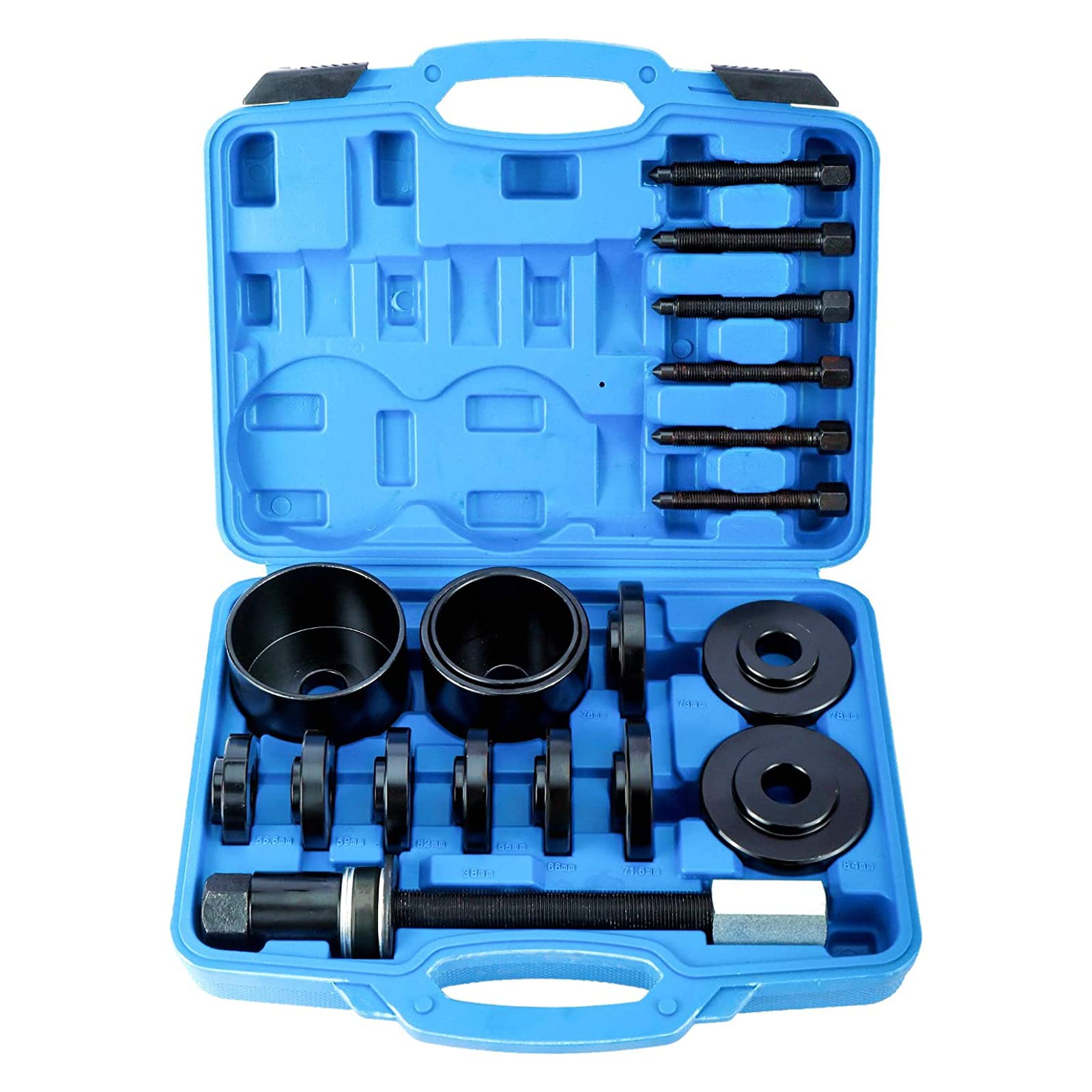
Top Wheel Bearing Tool: A Guide for Automotive Enthusiasts
Introduction
When it comes to automotive maintenance and repairs, having the right tools can make all the difference. One such tool that is essential for any DIY mechanic or professional is a wheel bearing tool. This tool is necessary for replacing or repairing wheel bearings, which are crucial components in a vehicle’s suspension system. In this article, we will discuss the importance of wheel bearing tools and explore the top options available on the market.
Part 1: Understanding Wheel Bearings
Level 1: What are wheel bearings?
Wheel bearings are a set of steel balls or rollers held together by a metal ring. They enable the wheels to spin with minimal friction and support the vehicle’s weight. When they wear out, they can cause excessive noise, vibration, and even compromise the vehicle’s handling.
Level 2: Signs of worn wheel bearings
Common signs of worn wheel bearings include grinding or grating noises while driving, excessive play or looseness in the wheel, and uneven tire wear. It is essential to address these issues promptly to prevent further damage to the vehicle’s suspension and steering components.
Part 2: Importance of Wheel Bearing Tools
Level 1: Why do you need a wheel bearing tool?
A wheel bearing tool is necessary for safely and effectively removing and installing wheel bearings. Without the proper tools, attempting to replace or repair wheel bearings can be extremely challenging and may result in damage to the surrounding components.
Level 2: Avoiding costly repairs
By investing in a quality wheel bearing tool, car owners can save money in the long run by performing wheel bearing maintenance themselves. This can prevent more extensive damage to the vehicle and eliminate the need for costly repairs at a mechanic’s shop.
Part 3: Types of Wheel Bearing Tools
Level 1: Mechanical wheel bearing tools
Mechanical wheel bearing tools are often used for pressing, pulling, and installing wheel bearings. These tools are available in various sizes and designs to accommodate different vehicles.
Level 2: Hydraulic wheel bearing tools
Hydraulic wheel bearing tools utilize hydraulic pressure to remove and install wheel bearings. These tools are often more powerful and efficient, making them ideal for heavy-duty applications.
Part 4: Top Wheel Bearing Tools on the Market
Level 1: Manufacturer A’s wheel bearing tool kit
Manufacturer A offers a comprehensive wheel bearing tool kit that includes a range of tools for various types of wheel bearings. Their kit is known for its durability and versatility, making it a top choice among mechanics.
Level 2: Manufacturer B’s hydraulic wheel bearing tool
Manufacturer B specializes in hydraulic wheel bearing tools and is renowned for its high-quality, precision-engineered products. Their hydraulic wheel bearing tool is designed to make the process of removing and installing wheel bearings seamless and efficient.
Part 5: Tips for Using Wheel Bearing Tools
Level 1: Safety precautions
Before using a wheel bearing tool, it is essential to follow safety precautions to prevent injury or damage to the vehicle. This includes wearing protective gear, supporting the vehicle properly, and using the correct tool for the specific application.
Level 2: Proper maintenance
Proper maintenance of wheel bearing tools is crucial for their longevity and effectiveness. This includes cleaning and lubricating the tools after each use, storing them in a dry and secure location, and inspecting them for any signs of wear or damage.
Part 6: Benefits of Using a Wheel Bearing Tool
Using a wheel bearing tool offers a range of benefits for anyone dealing with the maintenance and replacement of wheel bearings. One of the primary advantages of using a wheel bearing tool is the convenience it provides. These tools are designed to make the process of removing and installing wheel bearings much easier and more efficient, saving time and effort for auto mechanics and DIY enthusiasts alike.
Additionally, a wheel bearing tool helps to ensure the proper installation of wheel bearings, which is essential for the safe and smooth operation of a vehicle. Improperly installed wheel bearings can lead to a range of issues, including excessive noise, vibration, and even wheel failure. By using a wheel bearing tool, individuals can have confidence that the bearings are being installed correctly, reducing the risk of future problems.
Another benefit of using a wheel bearing tool is the potential cost savings it offers. By having the ability to remove and install wheel bearings with precision and ease, individuals can avoid the need for professional mechanics and costly repairs. This can be especially beneficial for those who frequently work on their own vehicles or run a business in the automotive industry.
Finally, using a wheel bearing tool can help to prolong the lifespan of wheel bearings. The proper installation and removal of wheel bearings can help prevent premature wear and damage, ultimately extending the life of the bearings and reducing the need for frequent replacements.
Part 7: Types of Wheel Bearing Tools
When it comes to working on wheel bearings, having the right tools for the job is crucial. There are several types of wheel bearing tools available, each designed for specific tasks related to the installation and removal of wheel bearings.
One of the most common types of wheel bearing tools is the wheel bearing removal tool. This tool removes wheel bearings from their housing. And enabling individuals to replace old or worn-out bearings with new ones. Wheel bearing removal tools may come in various shapes and sizes.
Another type of wheel bearing tool is the wheel bearing installation tool. Wheel bearing installation tools may come in the form of presses, drivers, or other specialized devices that help individuals apply the necessary force to seat the bearings without causing damage.
In addition to removal and installation tools, there are also wheel bearing service kits available. These kits typically contain a variety of tools and accessories needed for complete wheel bearing maintenance, including removal, installation, and inspection tools, as well as cleaning brushes and lubricants.
Furthermore, some wheel bearing tools are good for certain types of vehicles or wheel bearing systems, such as front-wheel drive or rear-wheel drive vehicles, as well as different bearing sizes and designs. Therefore, it’s important to choose a wheel bearing tool that is compatible with the specific vehicle and bearing type.
Part 8: Tips for Choosing the Right Wheel Bearing Tool
Choosing the right wheel bearing tool is essential for anyone working on the maintenance or replacement of wheel bearings. The following tips can help individuals select the right wheel bearing tool for their needs, ensuring that the job is done correctly and efficiently.
First and foremost, it’s essential to consider the specific type of wheel bearings being worked on. Different vehicles and wheel bearing systems require different tools for removal and installation. So it’s crucial to choose a tool that is compatible with the specific make and model of the vehicle.
Another important consideration when choosing a wheel bearing tool is the quality and durability of the tool. Investing in a high-quality tool can make a significant difference in the safety and effectiveness of the job, as well as the longevity of the tool itself. Tools from durable materials and precision engineering are more likely to withstand the forces. And wear associated with wheel bearing maintenance, reducing the risk of damage or failure.
Furthermore, individuals should consider the versatility and practicality of a wheel bearing tool. Such as removing and installing bearings in various locations, or for use with different types of vehicles. Having a versatile tool can save time and money, as it eliminates the need for multiple specialized tools for different tasks.
Conclusion
Additionally, individuals should consider the ease of use and safety features of a wheel bearing tool. Tools that are straightforward to operate and include safety features such as ergonomic handles, secure grips, and built-in safeguards can make the task of working on wheel bearings safer and more efficient, reducing the risk of accidents and injuries.
A wheel bearing tool is an indispensable asset for anyone in automotive maintenance and repairs. By understanding the importance of wheel bearings and investing in the right tools, car owners can ensure the safety and efficiency of their vehicles. Whether it’s a mechanical or hydraulic tool, choosing a top-quality wheel bearing tool will make the process of replacing or repairing wheel bearings seamless and effective. With the right tools and knowledge, car enthusiasts can tackle wheel bearing maintenance with confidence and precision.
In conclusion, choosing the right wheel bearing tool requires careful consideration of the specific needs and requirements of the job, as well as the compatibility, quality, versatility, ease of use, and safety features of the tool. By taking these factors into account, individuals can select a wheel bearing tool that meets their needs and ensures the successful maintenance and replacement of wheel bearings.
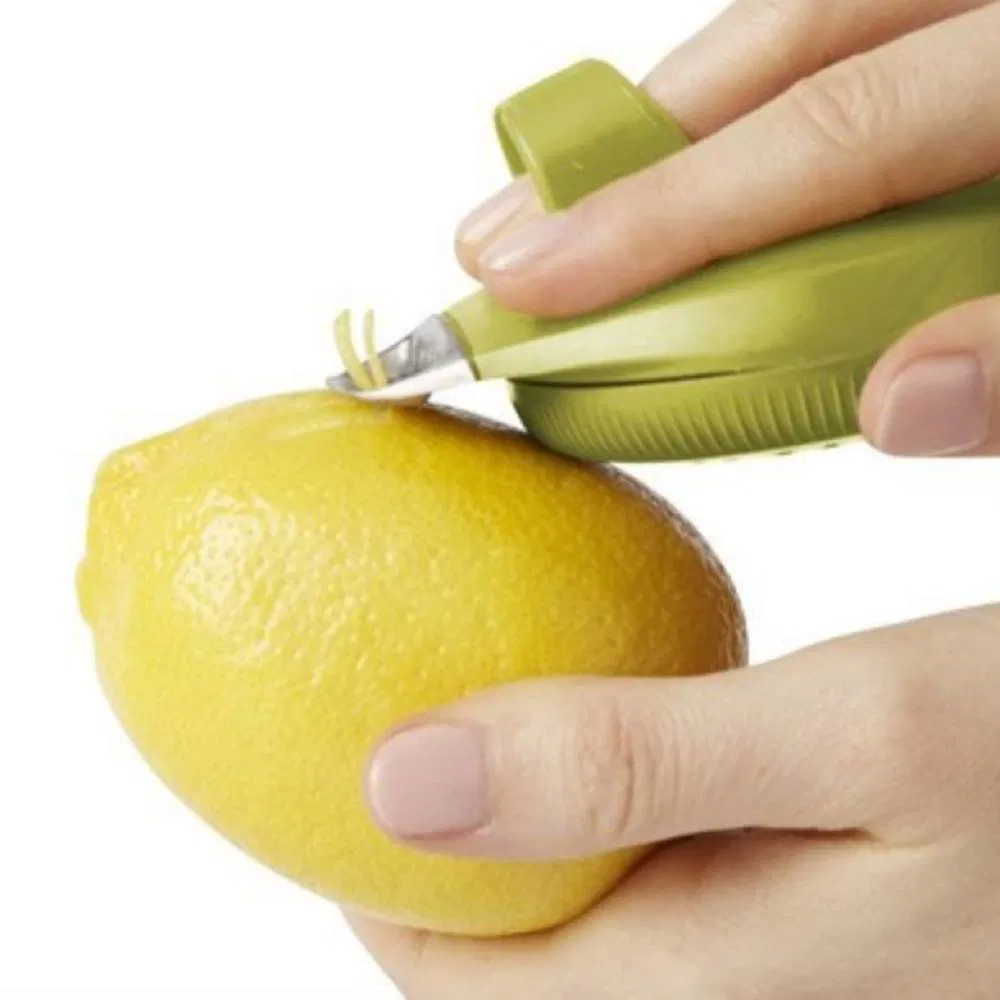
Lemon Zester Tool: How to Choose, Use, and Maintain
Introduction
Lemon zester tools are a must-have kitchen gadget for any home cook or professional chef. These handy tools are used to remove the flavorful zest from citrus fruits, such as lemons, limes, and oranges, and are a great addition to any kitchen arsenal. In this comprehensive guide, we will explore the different types of lemon zesters available, how to choose the right one for your needs, how to use it effectively, and how to maintain and care for your zester to ensure its longevity.
Part 1: Types of Lemon Zesters
Level 1: Overview of Lemon Zesters
There are several different types of lemon zesters available on the market, each with its own unique features and benefits. From classic handheld zesters to multi-functional zester-graters, there is a tool to suit every preference and cooking style.
Level 2: Comparison of Different Zester Types
We will compare and contrast the various types of lemon zesters, including handheld zesters, box zesters, and multi-purpose zester-graters. We will discuss the pros and cons of each type and provide recommendations for different uses and preferences.
Part 2: How to Choose the Right Lemon Zester
Level 1: Factors to Consider When Choosing a Lemon Zester
When selecting a lemon zester, there are several important factors to consider, such as the type of citrus fruits you will be zesting, your preferred zesting method, and your budget. We will explore each of these factors in detail to help you make an informed decision.
Level 2: Tips for Choosing the Best Lemon Zester
We will provide practical tips for choosing the best lemon zester, including reading customer reviews, testing the zester in-store, and considering the material and construction of the zester.
Part 3: How to Use a Lemon Zester
Level 1: Basic Zesting Techniques
We will cover the basic techniques for using a lemon zester, including how to hold the zester, how to remove the zest from the fruit, and how to avoid zesting the bitter white pith.
Level 2: Advanced Zesting Methods
For more advanced users, we will explore additional zesting methods, such as using a microplane grater for finely grated zest or using a channel knife for decorative citrus twists. We will also discuss tips for zesting large quantities of citrus fruits efficiently.
Part 4: Maintaining Your Lemon Zester
Level 1: Cleaning and Care Tips
Proper maintenance is essential for keeping your lemon zester in top condition. We will provide step-by-step instructions for cleaning and caring for your zester to prevent rust and dullness and to prolong its lifespan.
Level 2: Storage and Safety Considerations
We will also discuss storage and safety considerations for your lemon zester, such as the best way to store and protect it when not in use, and why it’s important to handle it with care to avoid injury and damage.
Part 5: Creative Uses for Lemon Zesters
Level 1: Zesting Beyond Citrus Fruits
While lemon zesters are primarily designed for citrus fruits, they can also be used for other ingredients, including nutmeg, ginger, and chocolate. We will explore creative ways to use your zester for a variety of cooking and baking applications.
Level 2: Garnishing and Flavoring with Zest
In addition to traditional zesting, we will discuss how to use lemon zest as a garnish and flavoring agent for savory and sweet dishes. From adding a burst of citrus flavor to cocktails to enhancing the aroma of seafood and desserts, the possibilities are endless.
Part 6: Maintenance and Care of Your Lemon Zester Tool
To ensure that your lemon zester tool remains in top condition, it is important to properly maintain and clean it after use. After using the zester, it is best to rinse it under warm water and gently scrub it with a brush to remove any lingering citrus pulp or zest. Additionally, it is recommended to hand wash the zester with mild soap and water to remove any oils or residue. Avoid using harsh chemicals or abrasive materials that could damage the zester’s sharp edges or stainless steel surface.
To keep the zester sharp, you can also use a small brush to periodically clean out any trapped zest or pulp from the grating surface. Finally, make sure to dry the zester thoroughly before storing it to prevent any rust or corrosion from developing. With proper care and maintenance, your lemon zester tool can provide you with years of reliable use for all your citrus zesting needs.
Part 7: Using Your Lemon Zester Tool for Creative Cooking
Beyond simply zesting lemons, a lemon zester tool can be a versatile instrument in the kitchen for adding flavor and texture to a variety of dishes. In addition to lemons, this tool can also be used to zest limes, oranges, and other citrus fruits. The zest from these fruits can infuse flavor into sauces, dressings, marinades, and even baked goods. The fine, delicate strands of zest can add a bright, citrusy flavor to dishes without the bitterness that can come from using the pith.
Furthermore, the zester can create beautiful garnishes for cocktails, desserts, and savory dishes alike. By using the zester to create citrus curls or twists, you can add an elegant finishing touch to your culinary creations. You can also experiment with zesting other ingredients such as ginger, garlic, or nutmeg to add depth and complexity to your cooking. With a bit of creativity and experimentation, your lemon zester tool can become a valuable asset in your kitchen arsenal.
Part 8: The Convenience and Versatility of a Lemon Zester Tool
The convenience and versatility of a lemon zester tool make it an essential gadget for any home cook or professional chef. Beyond its primary function of zesting citrus fruits, a zester can also be used to finely grate hard cheeses, such as Parmesan or Pecorino, to add a burst of flavor to pasta, salads, and more. The fine grating surface of the zester is also ideal for grating fresh ginger, garlic, or nutmeg, allowing you to easily incorporate these aromatic ingredients into your dishes.
Moreover, the compact size and ergonomic design of many lemon zester tools make them easy to handle and store. With its small footprint, a zester can easily be tucked away in a kitchen drawer or hung on a utensil rack without taking up valuable counter space. Additionally, many models come with protective covers for the sharp grating surface, ensuring safe storage and preventing accidental cuts.
The versatility of a lemon zester tool also extends to its ability to create decorative garnishes for your culinary creations. By using the zester to create citrus curls or twists, you can add a visually appealing touch to cocktails, desserts, and savory dishes. The creative possibilities are endless with a lemon zester tool, making it a valuable addition to any kitchen.
Conclusion
Lemon zester tool are versatile and indispensable kitchen tools that can elevate your culinary creations to new heights. By understanding the different types of zesters, how to choose the right one, how to use it effectively, and how to maintain and care for it, you can unleash the full potential of this simple yet powerful gadget. Whether you’re a seasoned chef or a novice cook, a lemon zester is a game-changing addition to your kitchen that will enhance your cooking experience and impress your family and friends with fresh and vibrant citrus flavors.
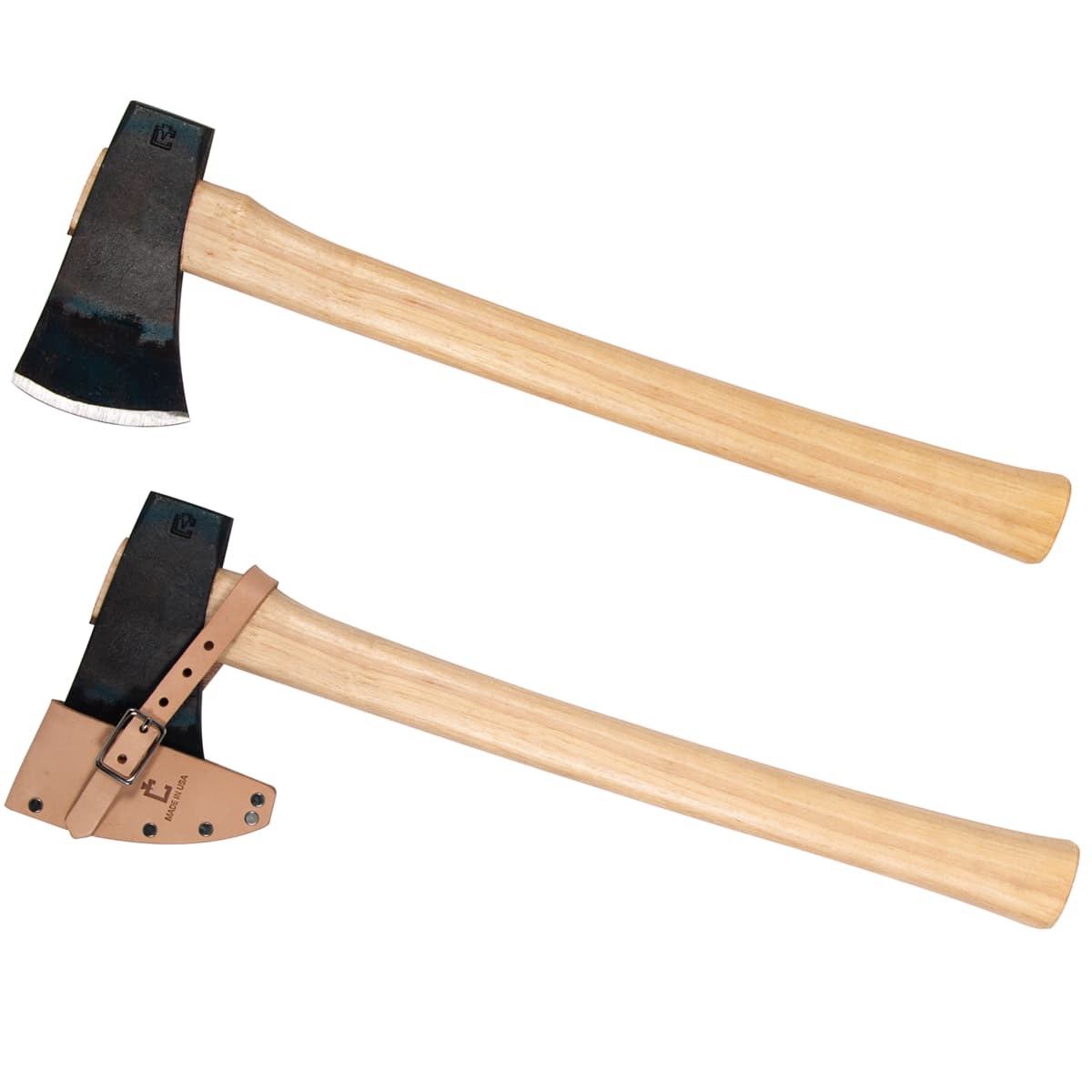
The Ultimate Guide to the Council Tool Axe
Introduction
When it comes to outdoor adventures, having the right tools can make all the difference. One such essential tool is the axe, which is a versatile and powerful tool for a wide range of tasks. Among the many axe manufacturers, Council Tool has gained a reputation for producing high-quality. In this comprehensive guide, we will explore everything you need to know about Council Tool axes, from their history and craftsmanship to the different types and uses of their axes.
Part 1: History and Craftsmanship of Council Tool Axes
Level 1: Founded in 1886, Council Tool has a long-standing tradition of producing top-notch axes that are known for their durability and performance. Each Council Tool axe by skilled artisans who take pride in their work, is using only the finest materials and time-honored techniques to create axes that are built to last.
Level 2: The company’s dedication to quality craftsmanship is evident in the attention to detail that goes into every Council Tool axe. From the selection of the best American-made steel to the precision heat-treating process and the hand-finishing of the axe heads, Council Tool ensures that each axe meets the highest standards of quality and performance.
Part 2: Types of Council Tool Axes
Level 1: Council Tool offers a wide range of axes to suit different needs and preferences. From felling axes and splitting mauls to double-bit axes and camping axes, there is a Council Tool axe for every task and user.
Level 2: Each type of Council Tool axe with specific features and functions cater to different applications. For example, a felling axe is ideal for chopping down trees, while a splitting maul is designed for splitting logs. Understanding the different types of Council Tool axes and their intended uses can help you choose the right axe for your needs.
Part 3: Uses of Council Tool Axes
Level 1: Council Tool axes are versatile tools for a wide range of tasks, both in the great outdoors and around the home. Whether you are a camper, a hunter, a woodsman, or a homeowner, having a reliable Council Tool axe can make light work of chopping, cutting, and shaping wood.
Level 2: From building a shelter and gathering firewood to clearing trails and performing yard work, a Council Tool axe can be an invaluable tool for outdoor enthusiasts and professionals. Additionally, Council Tool axes for more specialized tasks, such as carving and sculpting wood, is making them a versatile tool for artisans and craftsmen.
Part 4: Maintenance and Care of Council Tool Axes
Level 1: To ensure the longevity and performance of your Council Tool axe, proper maintenance and care are essential. This includes keeping the axe head sharp and free from rust, as well as regularly inspecting the handle for cracks or damage.
Level 2: Council Tool axes are built to last, but they still require regular maintenance to keep them in top condition. By following a few simple maintenance tips, such as storing your axe in a dry place and periodically applying oil to the axe head and handle, you can prolong the life of your Council Tool axe and keep it in optimal working condition.
Part 5: Choosing the Right Council Tool Axe for You
Level 1: With so many options available, choosing the right Council Tool axe can be a daunting task. Factors to consider when choosing a Council Tool axe include the intended use, the weight and length of the axe, the handle material, and the overall design and construction.
Level 2: Understanding your specific needs and preferences is key to choosing the right Council Tool axe. Whether you need a heavy-duty felling axe for serious woodcutting or a lightweight camping axe for backpacking adventures, taking the time to research and compare different models can help you find the perfect axe for your needs.
Part 6: The Versatility of Council Tool Axes
Council Tool axes are renowned for their versatility and effectiveness in a wide range of tasks. Whether you need to chop wood for a fire, clear brush, or build a shelter, a Council Tool axe is up to the challenge. With its durable construction and efficiently designed blade, this tool can handle a variety of outdoor tasks with ease.
The shape and size of the axe head play a crucial role in determining its versatility. Council Tool offers a range of axe head styles, including single-bit, double-bit, and Hudson Bay patterns, each designed to excel in specific applications. The weight and balance of the axe also contribute to its versatility, allowing for precise control and powerful strikes.
In addition, Council Tool axes are making them ideal for outdoor enthusiasts, campers, and survivalists. Their compact size and lightweight construction allow for easy transportation, so you can take your Council Tool axe with you on any adventure.
When it comes to versatility, Council Tool axes are unmatched. With their durable construction, efficient design, and range of head styles, these axes are ready to tackle any task you throw their way.
Part 7: The Importance of Maintenance for Council Tool Axes
Council Tool axes can last, but like any tool, they require regular maintenance to ensure optimal performance. Proper maintenance not only extends the life of your axe, but also ensures its safety and effectiveness. Here are some key maintenance tips for keeping your Council Tool axe in top condition:
- Keep the blade sharp: A sharp blade is essential for efficient cutting and chopping. Regularly sharpen your axe using a file or sharpening stone to maintain a keen edge.
- Clean and oil the blade: After each use, clean your axe blade with a damp cloth to remove dirt and debris. Then, apply a light coat of oil to protect it from rust and corrosion.
- Check the handle: Inspect the handle for any cracks, splits, or splinters, and sand them down or replace the handle if necessary. Keeping a smooth and sturdy handle is crucial for safe and comfortable use.
- Store properly: Store your axe in a dry, cool place away from moisture and direct sunlight to prevent rust and damage.
By following these maintenance tips, you can ensure that your Council Tool axe remains in top condition for years to come.
Part 8: The Legacy of Council Tool Axes
For over 130 years, Council Tool has been producing high-quality axes that have become a staple in the outdoor industry. Their commitment to craftsmanship, durability, and innovation has solidified their legacy as a trusted and reliable axe manufacturer. The result is a tool that is not only highly functional, but also a work of art.
Council Tool’s legacy extends beyond their products to their dedication to environmental sustainability and ethical business practices. They source their materials responsibly and strive to minimize their ecological footprint, ensuring that their axes are not only durable, but also environmentally friendly.
The enduring legacy of Council Tool axes is evident in their widespread use among outdoor enthusiasts, professionals, and everyday individuals. With a rich history and a dedication to quality, Council Tool axes will continue to be an essential tool for generations to come.
Conclusion
Council Tool axes are an essential tool for anyone who enjoys spending time outdoors or working with wood. With their long-standing tradition of craftsmanship and dedication to quality. By understanding the history, types, uses, maintenance, and selection of Council Tool axes, you can make an informed decision and choose the perfect axe for your needs. Whether you’re a seasoned woodsman or a weekend camper, a Council Tool axe is a reliable and versatile tool that can handle whatever tasks come your way.
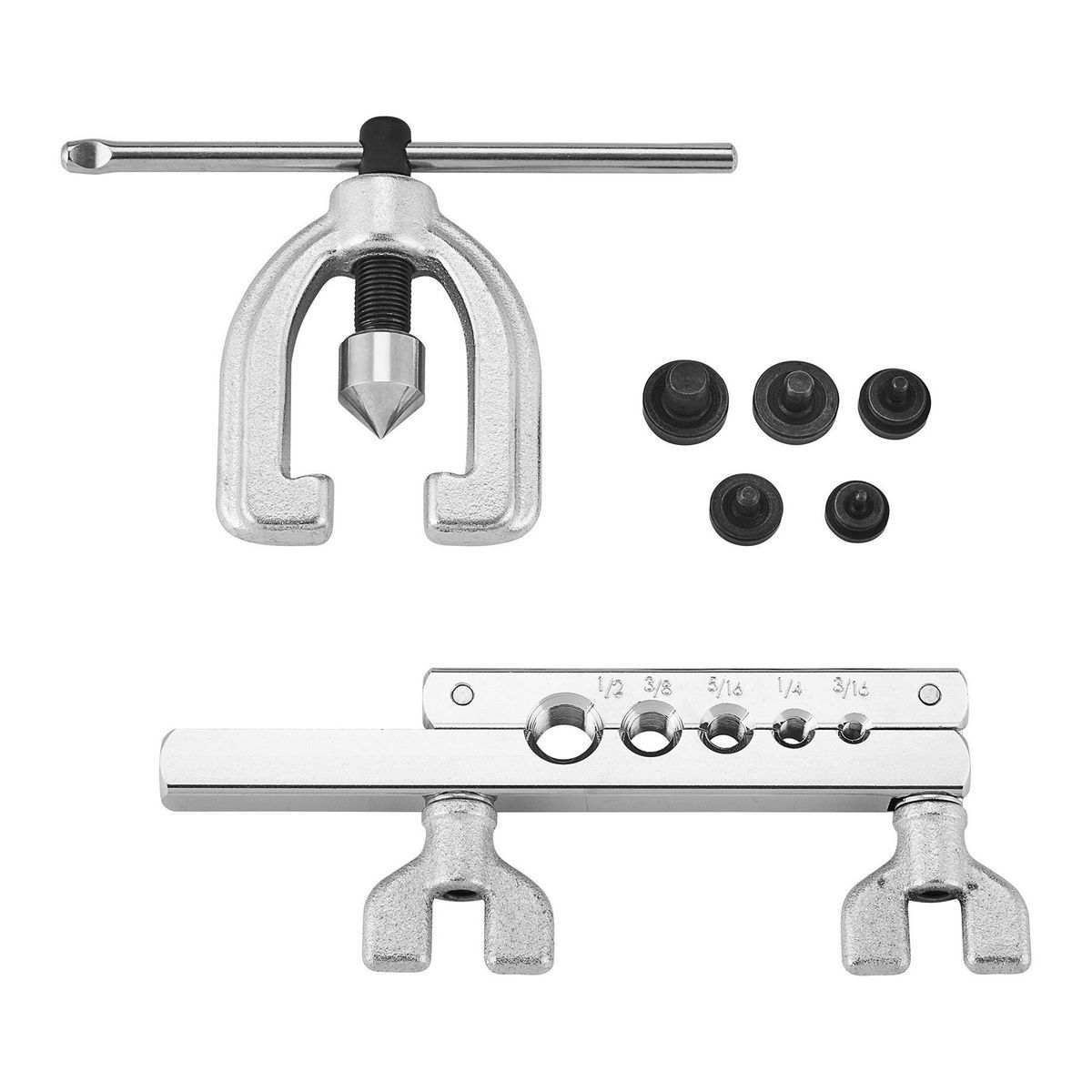
The Guide to Flaring Tool Kit: Everything You Need to Know
Introduction
Flaring tool kits are essential for any professional or DIY mechanic working on brake, fuel, or transmission lines. These kits can create precise flares on metal tubing, ensuring a tight and leak-free connection between pipes and fittings. In this article, we will delve into the world of flaring tool kits, covering everything from the different types of flares to the key features to look for in a quality kit. Whether you are a seasoned mechanic or a hobbyist looking to expand your tool collection, this comprehensive guide will help you make an informed decision when purchasing a flaring tool kit.
Part 1: Understanding Flares
Level 1: Types of Flares
Flares come in various shapes and sizes, each serving a specific purpose in different automotive and plumbing applications. The most common types of flares include the single, double, and bubble flare. Single flares are suitable for low-pressure applications, while double flares are used in high-pressure situations. Bubble flares, on the other hand, are commonly found in hydraulic brake systems. Understanding the different types of flares is crucial when choosing the right flaring tool kit for your needs.
Level 2: Application of Flares
Flares are used to create a secure and leak-proof connection between pipes and fittings. When installed correctly, flared connections can withstand high pressures and vibrations, making them ideal for automotive and hydraulic applications. Whether you are working on a classic car restoration or performing routine maintenance on your vehicle, having the appropriate flaring tool kit is essential for achieving professional results.
Part 2: Key Features of Flaring Tool Kits
Level 1: Versatility
A quality flaring tool kit should be versatile enough to handle a wide range of tube sizes and materials, including copper, aluminum, and steel. Look for a kit that includes multiple dies and adapters to accommodate different pipe diameters, ensuring that you have the right tool for the job.
Level 2: Durability
Durability is another crucial factor to consider when choosing a flaring tool kit. The tools should be constructed from high-quality materials such as hardened steel or aluminum to withstand the rigors of daily use. Additionally, look for ergonomic handles and a compact design for easy storage and handling.
Part 3: Types of Flaring Tools
Level 1: Manual Flaring Tool Kits
Manual flaring tool kits by hand are ideal for occasional use or small projects. These kits typically consist of a flaring bar, yoke, and various dies to accommodate different tube sizes. While they require more effort than their hydraulic counterparts, manual flaring tools are cost-effective and suitable for DIY enthusiasts.
Level 2: Hydraulic Flaring Tool Kits
Hydraulic flaring tool kits utilize hydraulic pressure to create precise and uniform flares with minimal effort. These kits are perfect for professional mechanics or workshops that require consistent and high-quality flares. Although they may be more expensive than manual kits, hydraulic flaring tools offer efficiency and precision, making them a worthwhile investment for anyone working with metal tubing regularly.
Part 4: Tips for Choosing the Right Flaring Tool Kit
Level 1: Consider Your Needs
Before purchasing a flaring tool kit, consider the specific applications and materials you will be working with. For instance, if you primarily work with steel tubing in automotive applications, a kit with a wide range of dies and adapters for steel pipes would be ideal. Understanding your needs will help you narrow down your options and find the best flaring tool kit for your requirements.
Level 2: Read Reviews and Recommendations
Researching flaring tool kits online and reading reviews from other mechanics or hobbyists can provide valuable insights into the performance and durability of different kits. Additionally, seek recommendations from trusted sources, such as colleagues or industry professionals, to ensure that you are investing in a reliable and high-quality flaring tool kit.
Part 6: Importance of a Flaring Tool Kit
A flaring tool kit is an essential tool for any mechanic or DIY enthusiast working on brake or fuel line repairs. It can create strong and reliable flares on metal tubing, ensuring a leak-free connection and safe operation of the vehicle. Flaring tool kits come in a variety of sizes and styles to accommodate different tubing diameters and materials, such as steel, aluminum, or copper.
One of the key advantages of using a flaring tool kit is the ability to create custom flares for specific applications. Whether it’s a single or double flare, the tool kit provides the flexibility to meet the unique requirements of the job. This is particularly important when dealing with vintage or custom vehicles that may have non-standard tubing sizes or materials.
Additionally, a flaring tool kit allows for precise and consistent flares, reducing the risk of over-tightening or damaging the tubing during installation. This is crucial for maintaining the integrity of the lines and ensuring their long-term performance. Without proper flaring, the tubing can become weak or prone to leakage, compromising the safety of the vehicle.
Furthermore, flaring tool kits are designed to be user-friendly, making it accessible for both beginners and experienced technicians. With clear instructions and simple operation, anyone can create professional-quality flares with minimal effort. This empowers individuals to take on their own repairs and maintenance, saving time and money in the long run.
In conclusion, a flaring tool kit is an indispensable tool for anyone working with metal tubing in automotive or other mechanical applications. Its ability to create custom, reliable flares ensures the safety and performance of the vehicle’s brake and fuel systems, making it a must-have for any workshop or garage.
Part 7: Types of Flaring Tool Kits
There are several types of flaring tool kits available on the market, each designed to meet specific needs and requirements for creating flares on metal tubing. Understanding the differences between these types can help users choose the right tool for their particular application.
One of the most common types of flaring tool kits is the standard flaring tool, which is designed to create single or double flares on metal tubing. These tools for automotive and other mechanical repairs, are providing a reliable and leak-free connection for brake and fuel lines. Standard flaring tools typically come with a variety of dies to accommodate different tubing sizes and materials.
Another type of flaring tool kit is the hydraulic flaring tool, which uses hydraulic pressure to create precise and consistent flares on metal tubing. This type of tool is ideal for high-volume production or repetitive flaring tasks, as it reduces the effort and time required to create professional-quality flares. Hydraulic flaring tools in manufacturing and industrial settings, where efficiency and accuracy are paramount.
In addition to standard and hydraulic flaring tools, there are also specialized kits for specific applications, such as HVAC or refrigeration systems. These kits may include unique dies and accessories to accommodate the particular needs of the industry.
When choosing a flaring tool kit, it is important to consider the type and size, as well as the intended application. By selecting the right tool for the job, users can ensure reliable and leak-free connections, ultimately promoting the safety and performance of the system.
Part 8: Maintenance and Care of Flaring Tool Kits
To ensure the long-term performance and reliability of a flaring tool kit, it is important to practice proper maintenance and care. By following a few simple guidelines, users can prolong the life of their tool and promote consistent, professional-quality flares.
First and foremost, it is essential to keep the flaring tool clean and free of debris. After each use, the tool should be thoroughly wiped down and inspected for any signs of wear or damage.
Additionally, the moving parts of the flaring tool, such as the handle and hydraulic mechanism, will ensure smooth operation and reduce the risk of binding or seizing. Using a high-quality lubricant can help to maintain the integrity of the components and prevent premature wear.
Furthermore, it is important to store the flaring tool kit in a clean, dry environment to prevent corrosion and rust. Proper storage can also reduce the risk of damage from accidental drops or impacts, preserving the accuracy and performance of the tool over time.
To periodically inspect the flaring tool kit for any signs of wear or damage, such as worn dies or bent components. Replacement parts from a reputable manufacturer can ensure compatibility and maintain the tool’s original performance.
By following these maintenance and care guidelines, users can maximize the longevity and reliability of their flaring tool kit, ultimately promoting safe and effective flare creation for years to come.
Conclusion
In conclusion, flaring tool kits are essential for creating secure and leak-free connections in metal tubing for various automotive and plumbing applications. Understanding the types of flares, key features to look for, and the different types of flaring tools available will help you make an informed decision when choosing a flaring tool kit. Whether you opt for a manual or hydraulic kit, it is essential to prioritize versatility and durability to ensure that your flaring tool kit can handle a wide range of tube sizes and materials. By considering your specific needs and doing thorough research, you can find the perfect flaring tool kit to add to your toolbox. With the right tools at your disposal, you can tackle any flaring job with confidence and precision.
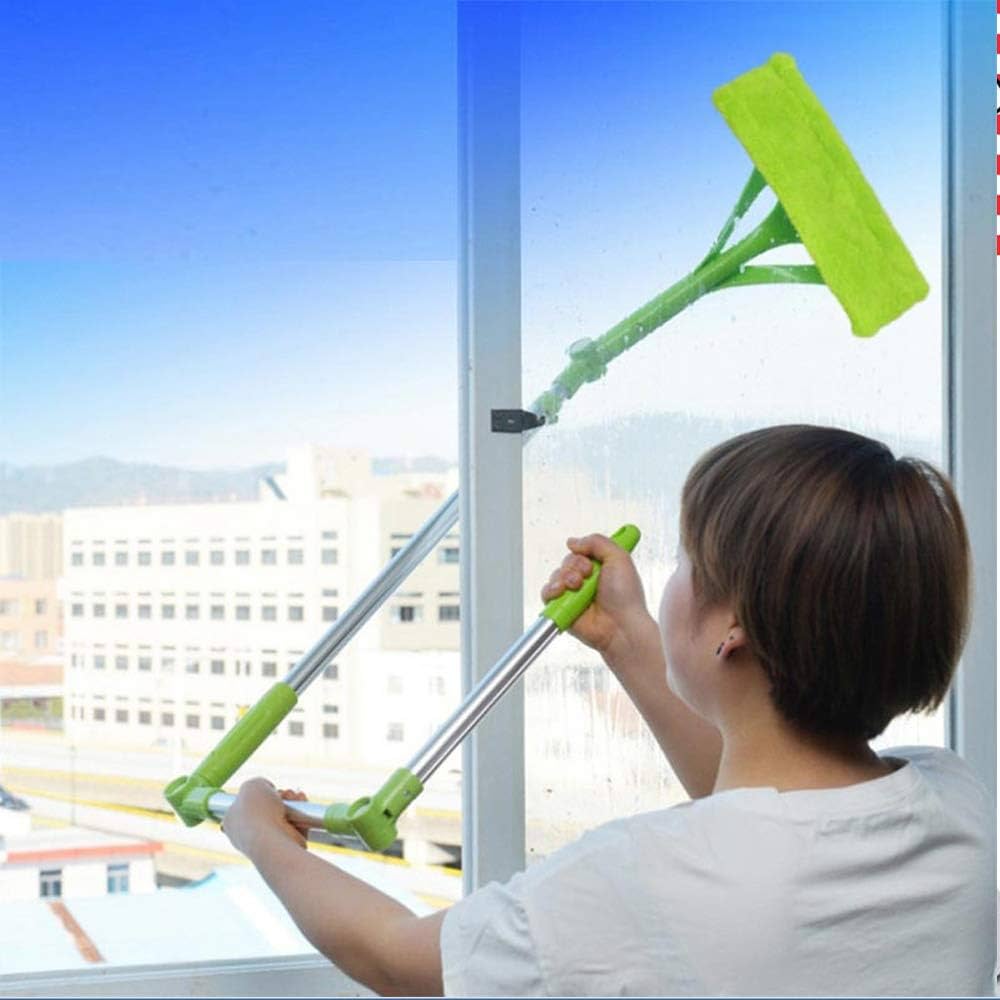
Window Cleaner Tools: Achieve a Streak-Free Shine Every Time
Introduction
When it comes to cleaning our homes, windows often get neglected. However, clean and sparkling windows can make a significant difference in the overall appearance of our homes. To achieve that streak-free shine, it’s essential to have the right window cleaner tool at your disposal. In this comprehensive guide, we will explore the various tools and techniques that can help you achieve clean and crystal-clear windows.
Part 1: The Basics of Window Cleaning Tools
Level 1: Traditional Window Cleaner Tools
Traditionally, window cleaning tools consisted of a bucket, a squeegee, and a cleaning solution. The squeegee is an essential tool for removing dirt and grime from the window surface, while the bucket holds the cleaning solution and water.
Level 2: Modern Window Cleaner Tools
In recent years, modern window cleaning tools have emerged to make the process more efficient and effective. These tools include extendable poles with interchangeable cleaning heads, microfiber cloths, and specialized cleaning solutions designed to eliminate streaking.
Part 2: Squeegees and Scrubbers
Level 1: Squeegees
Squeegees come in various sizes and materials, with rubber blades that remove water and dirt from the window surface. They are essential for achieving a streak-free finish and are available in both handheld and extendable versions for reaching high windows.
Level 2: Scrubbers
They typically consist of a scrubbing pad and a handle, and some models come with an attached squeegee for convenience.
Part 3: Cleaning Solutions and Chemicals
Level 1: Homemade Cleaning Solutions
For those who prefer DIY solutions, a homemade cleaning solution can be made using vinegar, water, and a few drops of dish soap. This natural solution is effective at removing dirt and grime from windows without leaving behind any residue.
Level 2: Commercial Cleaning Chemicals
Commercial cleaning chemicals are also available for those who prefer a ready-made solution. These chemicals are formulated to break down tough grime and provide a streak-free finish, and are available in various strengths depending on the level of cleaning required.
Part 4: Microfiber Cloths and Wipes
Level 1: Microfiber Cloths
Microfiber cloths are a staple for window cleaning, as they are highly effective at capturing dirt and grime without leaving behind lint or streaks.
Level 2: Window Cleaning Wipes
For quick and convenient cleaning, window cleaning wipes are a popular choice. Pre-moistened with cleaning solution, these wipes are perfect for spot cleaning or touching up windows in between more thorough cleanings.
Part 5: Extension Poles and Accessories
Level 1: Extension Poles
For reaching high windows or areas that are difficult to access, extension poles are indispensable. These poles can be attached to squeegees, scrubbers, or cleaning heads, allowing you to clean windows at various heights without the need for a ladder.
Level 2: Accessories
Accessories such as replacement blades for squeegees, holster belts for carrying tools, and protective gloves for handling cleaning chemicals are essential for a hassle-free window cleaning experience.
Part 6: Benefits of Using a Window Cleaner Tool
There are numerous benefits to using a window cleaner tool in your household or commercial cleaning routine. Here are some of the key advantages:
- Time-saving: Using a window cleaner tool can significantly reduce the time it takes to clean your windows, especially if you have a large number of windows to clean. The tool allows for quick and efficient cleaning, saving you valuable time and energy.
- Improved results: Window cleaner tools are designed to provide streak-free and spotless window cleaning, resulting in a clear and sparkling finish. This can enhance the overall appearance of your home or business and provide a more inviting and professional atmosphere.
- Safety: Cleaning windows can be a risky task, especially when dealing with high or hard-to-reach windows. A window cleaner tool can help you clean these windows safely from the ground, reducing the need for ladders or precarious climbing.
- Eco-friendly: Many window cleaner tools with environmentally-friendly cleaning solutions, are minimizing the use of harmful chemicals and reducing the impact on the environment.
- Cost-effective: Investing in a window cleaner tool can save you money in the long run, as it prevents the need for hiring professional window cleaners or frequent replacement of cleaning supplies.
Overall, incorporating a window cleaner tool into your cleaning routine can lead to time and cost savings, improved results, and a safer and more environmentally-friendly approach to window cleaning.
Part 7: Choosing the Right Window Cleaner Tool for Your Needs
When it comes to choosing a window cleaner tool, there are several factors to consider to ensure that you select the right tool for your specific needs. Here are some key considerations:
- Type of windows: Consider the type of windows you will be cleaning, as this will impact the type of cleaner tool you will need. For example, if you have high or hard-to-reach windows, you may want to invest in a telescopic window cleaner tool.
- Cleaning solution compatibility: Some window cleaner tools are designed for use with specific cleaning solutions. So be sure to choose a tool that is compatible with the products you prefer to use.
- Ease of use: Look for a window cleaner tool that is easy to assemble, operate, and maintain. Consider factors such as the weight of the tool, the ergonomics of the handle, and any additional features that may enhance usability.
- Durability: Invest in a high-quality window cleaner tool that is built to last, as this will save you money in the long run and ensure that you can rely on the tool for years to come.
- Budget: Determine your budget for a window cleaner tool and choose a tool. It offers the best value for your investment.
By carefully considering these factors, you can select a window cleaner tool, providing you with an effective and efficient solution for keeping your windows clean and clear.
Part 8: Maintaining and Caring for Your Window Cleaner Tool
Proper maintenance and care for your window cleaner tools are essential to ensure its longevity, effectiveness, and safety. Here are some tips for maintaining and caring for your window cleaner tool:
- Regular cleaning: After each use, clean your window cleaner tool to remove any dirt, debris, and cleaning solution residue. Use a mild detergent and water to gently clean the tool and let it air dry before storing it.
- Inspect for wear and tear: Regularly inspect your window cleaner tool for any signs of damage, such as worn-out or frayed parts, loose handles, or malfunctioning mechanisms. Address any issues promptly to prevent further damage and maintain safety.
- Store properly: Store your window cleaner tool in a dry and clean environment, away from direct sunlight and extreme temperatures. Avoid storing the tool near corrosive materials or sharp objects that could damage it.
- Replace parts as needed: Over time, certain parts of your window cleaner tool may wear out or become damaged. Be sure to replace these parts as needed to maintain the tool’s functionality and safety.
- Follow manufacturer’s guidelines: Always follow the manufacturer’s guidelines and recommendations for the proper use, maintenance, and care of your window cleaner tool.
By taking these maintenance and care tips into consideration, you can maximize the lifespan and performance of your window cleaner tool, ensuring that it continues to provide you with effective and efficient results for your window cleaning needs.
Conclusion
Achieving clean and streak-free windows doesn’t have to be a daunting task. With the right window cleaner tools and techniques, you can make the process more efficient and achieve professional results. Whether you prefer traditional tools or modern innovations, there are plenty of options available to suit your cleaning needs. So, arm yourself with the right tools and get ready to enjoy the transformative effect of sparkling clean windows in your home.
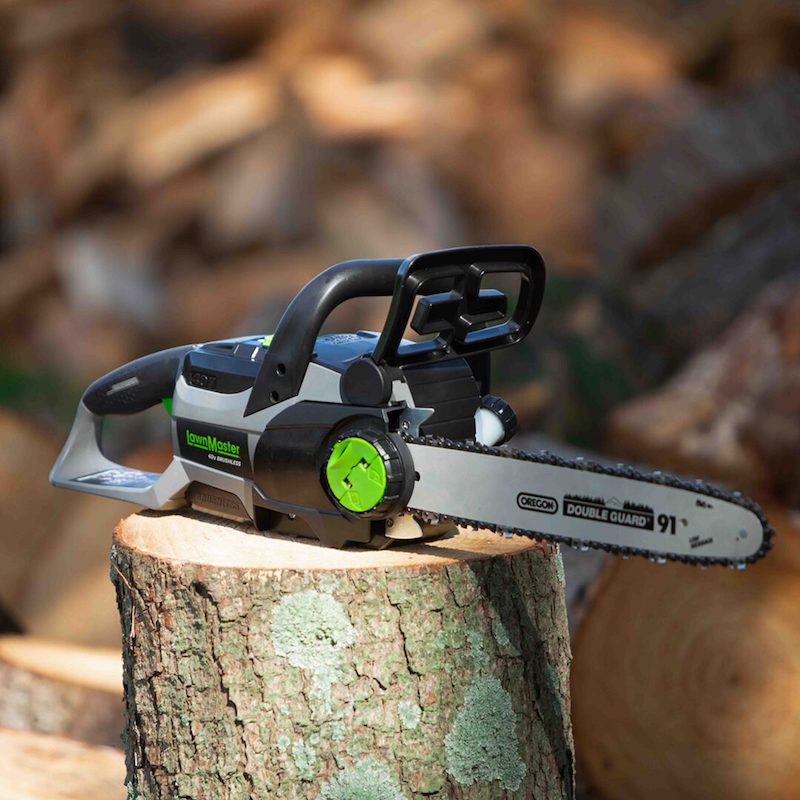
The Surprising Origins of Chainsaws: A Medical Marvel
The Birth of the Chainsaw in Childbirth Assistance
Why was chainsaws invented?
Why was chainsaws invented? The invention of the chainsaw is a tale that begins, not in forestry, but in the realm of medicine. Its roots stem from the lifesaving need to assist in childbirth. In the mid-18th century, doctors faced life-threatening labor complications with limited options. A tool was desperately needed to aid in these emergency situations.
The surprising solution was the chainsaw, originally designed by Scottish doctors John Aitken and James Jeffray. Unlike today’s robust, fuel-powered machines, this early version was a hand-operated instrument meant for delicate medical procedures, namely symphysiotomies. The procedure involved widening the pubic symphysis to facilitate childbirth when complications arose.
This initial chainsaw was a groundbreaking medical tool that employed a fine-toothed chain capable of cutting through bone much more efficiently than the knives or saws previously used. However, it is important to clarify that despite the name and mechanistic similarities, these early chainsaws were distinctly different from the woodcutting tools we’re familiar with today.
Why was chainsaws invented? While the invention was indeed used to aid in difficult deliveries, it was also a forbearer for a host of other medical instruments. The teethed chain concept, first introduced in the medical field, would eventually evolve, inspiring the devices that would carve a path through dense forests. Thus, the chainsaw’s creation was not only a pivotal moment in medical history but also inadvertently laid the foundations for modern-day forestry equipment.
Despite its historical significance, the chainsaw’s connection to childbirth is often a detail lost in time, overshadowed by its prominent role in the timber industry. Yet, without this medical origin, the development of the chainsaw might have taken a very different course.
Symphysiotomy: The Precursor to Chainsaw Development
The journey of the chainsaw began with a procedure called symphysiotomy. This medical method was crucial in the 18th century. It helped women in difficult childbirth. Doctors needed a way to widen the pelvic passage. This was lifesaving for both mother and child.
French doctor Jean-René Sigault introduced symphysiotomy in 1777. It involved separating the pelvic joint. This created more space for childbirth. But, the procedure was risky and painful.
Scottish inventors, John Aitken and James Jeffray, saw a need for a better tool. In 1785, they designed the first chainsaw for medical use. The tool was hand-operated and precise. It aided in the symphysiotomy by cutting the bone efficiently.
The invention was not the same as modern chainsaws. It was much smaller and had a different use. But it was the start of something bigger. The design showed how a chain could cut with accuracy and speed.
The early chainsaw evolved with time. It paved the way for more developed tools. It eventually reached the field of surgery. Later, it would inspire the powerful chainsaws used in forestry today.
In the development of medical equipment, the chainsaw was a leap forward. It illustrates how inventiveness can cross fields, from medicine to industry. The symphysiotomy procedure may have fallen out of favor. But its chainsaw legacy lives on in many areas of modern technology.
The Journey from Aitken’s Flexible Chainsaw to Heine’s Osteotome
Following Aitken and Jeffray’s invention, the chainsaw found a new form. Bernhard Heine, a German surgeon, saw potential for improvement. In 1830, he created the osteotome. The osteotome was hand-cranked. It was precise. It resembled the modern chainsaw, but for medical use.
The osteotome’s teeth cut through bone with ease and speed. It made surgeries quicker. Patients faced less trauma. It was a giant leap in medical tools. Heine’s invention showed innovation. It had a fine, toothed chain. More surgeries could be completed with less harm to patients.
Heine’s chainsaw, the osteotome, was costly. It needed a skilled hand. Heine himself was among the few who could use it well. Yet, it set a benchmark for surgical instruments. The osteotome was used for delicate surgeries. It was also used in other bone surgery. Heine’s work paved the way for the chainsaws we recognize today.
From Aitken’s concept to Heine’s innovation, the medical chainsaw evolved. It became crucial in surgery and later in industry. The osteotome was a strong link between medicine and forestry. The invention’s legacy lived on beyond its original purpose.
The Evolution and Adaptation: Chainsaws in Surgery
As medical needs grew, so did the chainsaw’s role in surgery. Doctors saw the chainsaw’s potential beyond childbirth. It began to revolutionize surgeries involving bone cutting. The precision of the chainsaw reduced patient suffering and offered quicker recovery times. Heine’s osteotome opened new doors for orthopedic procedures. Surgeons could now access and remove small pieces of bone. This reduced damage to surrounding tissues.
Early chainsaws played a critical role in surgeries before modern anesthesia and antibiotics. They allowed for speedier operations, which was vital. Quickness reduced the risk of infections and other complications. Over time, the design of medical chainsaws improved. They became more robust and versatile.
Despite its surgical success, the chainsaw was expensive and required skill. Only a few surgeons, like Heine, mastered the intricate device. Still, the chainsaw’s adaptation in surgery was a milestone. It showed the impact of technological advancements on medicine.
Bernhard Heine’s osteotome remains a testament to innovation. It bridged a gap between traditional tools and modern surgical instruments. The chainsaw’s evolution in surgery demonstrates intent. It aimed to reduce suffering and save lives.
From Obstetrics to Orthopedics: The Medical Applications of Chainsaws
Why was chainsaws invented? The early chainsaw was not just for childbirth. It later became a vital tool for orthopedic surgeries. The design was simple yet effective. Chainsaws could cut through bone with speed and accuracy. This saved patients from excessive trauma during surgery.
German surgeon Bernhard Heine improved the chainsaw for orthopedics in 1830. He created the osteotome, a hand-cranked chainsaw. It was precise and efficient. The teeth on the chain moved quickly through bone. This reduced the time surgeries took.
The osteotome changed how orthopedic surgeries were done. It allowed for careful removal of bone. This was important where precision mattered. The chainsaw could now help with various bone surgeries. It showed how medical tools could evolve and serve more purposes.
Even though they were great, these medical chainsaws were expensive. They needed a surgeon with good skills to use them. Not many doctors could master them like Heine did. Still, the tool’s value in medical procedures was clear. It reduced harm to patients and helped save lives. The medical chainsaw was a big step in surgical progress.
Orthopedic surgeries still benefit from the technology’s origins today. While methods have advanced, the concept remains. A chainsaw’s ability to cut precisely made a big impact. We owe a lot to these medical origins for our current surgical tools.
The Modern Chainsaw: Transition to Timber
The chainsaw’s journey from medical origins to the timber industry is fascinating. The saw’s evolution began with aiding in childbirth and bone surgeries. Gradually, it became a tool for cutting timber. This transition occurred when inventors saw the potential of the chainsaw’s design for woodcutting.
It was in the early 20th century that the chainsaw started being adapted for forestry. The power, speed, and precision needed for medical bones were ideal for cutting trees. Early versions were large and required multiple people. But the basic concept—using a chain with sharp teeth to cut quickly—remained the same.
The invention of the electric chainsaw by Andreas Stihl changed the game. Stihl’s 1926 patent introduced tools that made timber cutting easier. His electric and gas-powered models still required two people, but they were more efficient. It was only several decades later that chainsaws became light enough for one person to handle. This shift made the tools even more accessible and changed forestry work forever.
Today, the chainsaw is a key tool for timber cutting. Its medical history is often unknown, but it’s important. This history shows how tools can shift from one industry to another. It’s a testament to human ingenuity and adaptability.
Andreas Stihl: Revolutionizing the Chainsaw for Forestry
Andreas Stihl shaped chainsaw history. In 1926, he invented the first electric chainsaw. It was a big change. Stihl then created a gas-powered model. Both chainsaws needed two people to operate them.
His inventions made woodcutting more efficient. Forestry work had a new tool. This innovation led to more changes. Chainsaws evolved. They became lighter and easier to use. By the 1950s, one person could handle a chainsaw.
The modern chainsaw was born. It was far from its medical roots. Stihl’s work was crucial. It turned a medical tool into a forestry essential. Today, Stihl is a big name in chainsaw manufacturing.
Thanks to Stihl, chainsaws are now better. They are important for timber cutting. This shift shows creative thinking. A device for childbirth became key for forestry. It demonstrates how inventions change over time. And how they find new roles in different industries.
Chainsaws Today: Beyond their Medical Beginnings
Why was chainsaws invented?
Why was chainsaws invented? The chainsaw has come a long way since its medical start. Today, chainsaws are known for cutting wood, not aiding births or surgeries. They’re used in gardens, forests, and for various construction tasks. Precision and power are still key traits, as in the past. Yet, they’re now built for safety and ease of use, too.
We see chainsaws in many shapes and sizes. From small, electric models for home use to large, gas-powered saws for forestry. They work faster and safer than ever before. Why was chainsaws invented? Innovative features have been added. These include anti-vibration systems and automatic chain oilers.
Chainsaws today also have a focus on the environment. Manufacturers aim to reduce emissions and noise levels. Electric and battery-operated saws are becoming more popular. They’re quieter and cleaner. Such advances show how the chainsaw keeps evolving. It adapts to new needs and standards.
The journey from medical tool to timber powerhouse is unique. It shows how inventions can move across different fields. It also highlights the importance of adapting tools for new needs. History reminds us how diversity in application can stem from simple origins. Chainsaws have grown beyond their initial purpose, carving out a lasting legacy in modern industry.
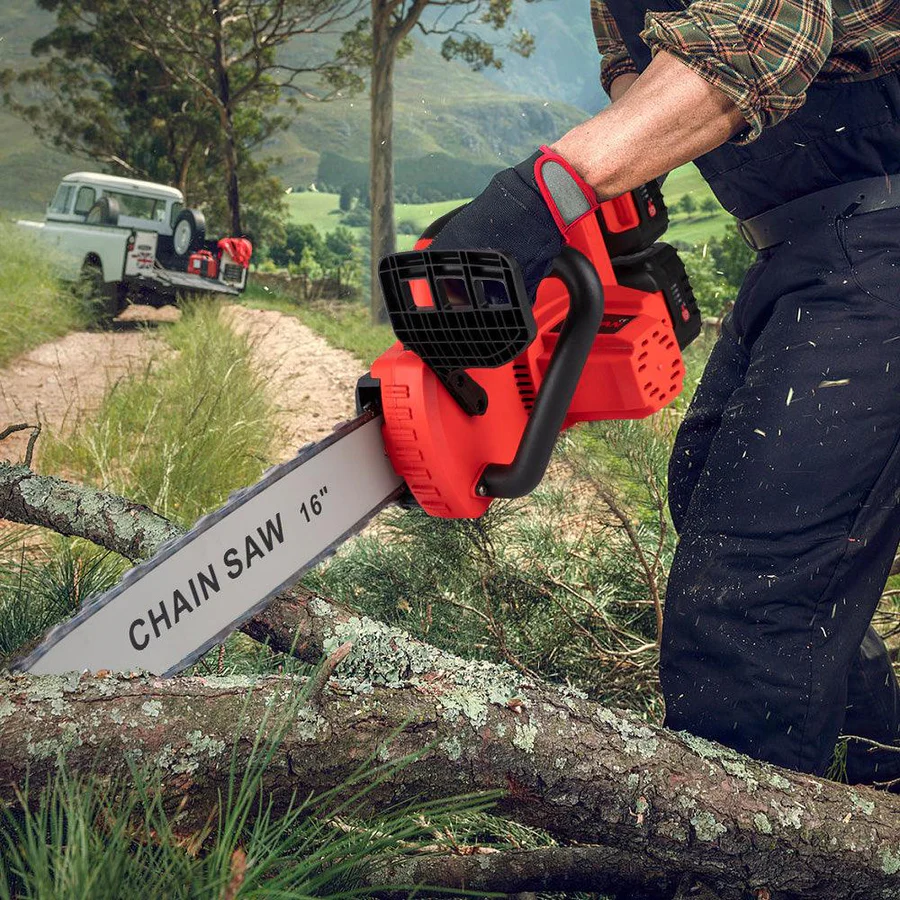
Craftsman Chainsaw Origins: Manufacturer Insights
Overview of Craftsman Chainsaw Brands
Craftsman chainsaws have a significant history in the world of outdoor power equipment. Over the years, various manufacturers have crafted these tools, each leaving their unique mark on the product line. One key aspect of these partnerships is the model number prefix system, which tells us who makes Craftsman chainsaws for each specific model.
For those enthusiasts and professionals looking for reliable information on Craftsman chainsaw origins, understanding the model number prefixes is crucial. The prefixes are often a sequence of three digits, which directly link to a particular manufacturer. For instance, models starting with ‘358’ have their roots with Poulan, while ‘917’ models link back to Roper. Another popular prefix ‘944’ leads us to Husqvarna, showcasing the diversity of Craftsman’s partnerships.
However, it’s important to remember that while these prefixes give us a general understanding, there could be exceptions due to various reasons such as branding strategies or manufacturer changes over time. Craftsmen’s association with Sears has meant that many of these chainsaws also carried the Sears branding, further complicating their lineage.
In our modern era, identification can be even more challenging. With the Craftsman Pro Series, confusion sometimes arises, as Craftsman has occasionally used the same prefix for different makes. For example, certain Pro Series models using the ‘358’ prefix might trace back to Husqvarna, despite ‘358’ often signaling a Poulan origin. Such complexities make it imperative for users and collectors to conduct thorough research or consult updated lists or forums that keep track of these changes.
Lastly, it’s vital for owners to recognize that regardless of the manufacturer, maintenance and proper care are key for the longevity of their Craftsman chainsaw. In the following sections, we’ll delve into aftermarket chain options, how to start and maintain older Craftsman chainsaws, and provide tips for selecting the right chain and maintaining sharpness for optimal performance.
Historical Association with Sears
The link between Craftsman and Sears is a storied one, harking back many decades. Sears has been the umbrella under which the Craftsman brand flourished, known for its range of tools, including chainsaws. Enthusiasts and homeowners alike have turned to Sears for these trusted products, as Craftsman became synonymous with durability and reliability. The historical association also implies that many Craftsman chainsaws were sold under the Sears name, adding a layer to the brand’s legacy.
This partnership played a significant role in how individuals came to recognize and appreciate Craftsman products. Though Craftsman chainsaws were manufactured by different companies, they were often identified through the Sears catalog or stores. This strategy not only solidified Sears as a cornerstone retail giant but also embedded Craftsman in the minds of consumers as a go-to for quality chainsaws and other tools.
As times have changed, so has the relationship between Craftsman and Sears. The emergence of more manufacturers and branding shifts has altered the landscape. Nevertheless, the historical association with Sears has left an indelible imprint on who makes Craftsman chainsaws and how users connect with the brand. Despite changes in the retail environment, the narrative of Craftsman’s quality under the Sears name continues to inspire confidence in consumers searching for hardy and reliable chainsaws.
The Craftsman chainsaw’s legacy is built upon a foundation laid by Sears, signifying an era of quality tools accessible to a wide consumer base. Whether it is reflected in the model number prefixes or in the secondhand market, the historical ties between Craftsman and Sears remain a vital piece of the story behind who makes Craftsman chainsaws.
Craftsman Chainsaw Model Number Prefixes and Manufacturers
Identifying the manufacturer of a Craftsman chainsaw is straightforward with the model number prefix. These prefixes, usually three digits, directly link to a specific manufacturer. Let’s explore some of these prefixes and what they reveal about who makes Craftsman chainsaws.
- 129 Mono: Chainsaws with this prefix are made by Mono, known for their robust engine components.
- 143 Tecumseh: Models starting with ‘143’ indicate Tecumseh’s craftsmanship, a company with a legacy in engine production.
- 234 Poulan: The ‘234’ prefix is a sign of Poulan’s manufacturing, a brand with a strong standing in the chainsaw market.
- 271 Kioritz (Echo): Echo, previously known as Kioritz, is behind the ‘271’ models, offering advanced chainsaw designs.
- 358 Poulan: Interestingly, ‘358’ also links back to Poulan, showing the range of models they produce for Craftsman.
- 517 Homelite: Homelite delivers quality and is associated with the ‘517’ prefix on Craftsman chainsaws.
- 636 Echo: Echo makes its second appearance with the ‘636’ series, emphasizing their significant role.
- 917 Roper: Chainsaws that begin with ‘917’ trace back to Roper, a company with a tradition in chainsaw manufacturing.
- 944 Husqvarna: A ‘944’ model is a signal of Husqvarna’s elegant engineering and quality craftsmanship.
Despite these associations, it’s important to note that manufacturers could change over time, and exceptions exist. One must be diligent and perhaps consult the latest lists or forums to ensure accurate information. Furthermore, model numbers may also be linked to the Sears and David Bradley brands, deepening the storied history of who makes Craftsman chainsaws.
Whether you’re buying new or maintaining an existing chainsaw, these prefixes are helpful for sourcing parts and understanding the longevity and potential of your equipment. Stay tuned for insights into aftermarket chain options, starting and maintaining older models, and essential maintenance tips to keep your Craftsman chainsaw in peak condition.
Aftermarket Chain Options for Craftsman Chainsaws
When looking for replacement chains for your Craftsman chainsaw, you’ll find ample aftermarket options. Aftermarket chains provide flexibility and can offer cost savings over the original equipment manufacturer (OEM) parts. It’s crucial, however, to select chains that match your saw’s specifications to ensure safety and optimal performance.
Compatibility Is Key
Start by verifying the chain length, gauge, and pitch required for your Craftsman chainsaw. These must match your saw’s bar and sprocket for proper function. Most aftermarket chains, like the popular Oregon brand, clearly label these measurements on the packaging.
Brands That Craftsman Chainsaw Users Trust
Oregon is a leading brand in aftermarket chainsaw chains and is widely trusted by Craftsman users. Their chains are known for quality, durability, and a broad range of options for different saw models. Another option is Stihl, although their chains are typically used with Stihl saws, they also fit various Craftsman models.
Sharpening and Savings
Consider sharpening your existing chain before opting for a replacement. With basic tools like a round file, you can maintain a sharp cutting edge on your chain. This can extend the chain’s life and save you money in the long run. If the chain is beyond sharpening, aftermarket options like Oregon offer a more affordable alternative to Craftsman’s own chains without compromising on performance.
Conclusion
In selecting an aftermarket chain for your Craftsman chainsaw, ensure the compatibility of length, gauge, and pitch. Trusted brands like Oregon provide reliable options that users favor for their durability and value. Sharpening your chain regularly can reduce the need for replacements, making chainsaw maintenance more cost-effective.
Starting and Maintaining an Older Craftsman Chainsaw
Starting an older Craftsman chainsaw may seem daunting, especially if it has been unused for a while. However, with proper steps and maintenance, you can revive your trusty tool and ensure it operates efficiently.
Reviving an Old Chainsaw
- Begin by examining the saw for any signs of wear or damage. Replace any broken parts before attempting to start it.
- Clean out the fuel tank and consider using a fuel additive like Seafoam to help clean the engine.
- Replace the spark plug with a new one to ensure reliable ignition.
- Check and clean or replace the air filter, as dirty filters can hinder starting and performance.
- Lubricate the chain and bar with bar oil to protect against wear and ensure smooth operation.
Ensuring a Smooth Start
- Mix fresh fuel with the correct oil ratio for your chainsaw model before filling the tank.
- Prime the engine by pressing the primer bulb, if available, a few times to get fuel into the carburetor.
- Set the chainsaw on a flat surface, engage the chain brake, and pull the starter rope firmly until the engine attempts to start.
- Once the engine sputters, disengage the choke (if applied) and continue pulling the starter rope until the chainsaw runs smoothly.
- Allow the chainsaw to warm up at idle before beginning your cutting task.
Regular maintenance and proper starting will enhance the performance and longevity of your older Craftsman chainsaw. These steps help dust off any Craftsman chainsaw, regardless of its years of service, and prepare it for efficient operation. By opting for a systematic approach, you give your equipment the best chance at a second life.
Tips for Selecting the Right Chainsaw Chain
Choosing the right chainsaw chain ensures safety and cutting efficiency. Here are essential tips:
Check the Saw’s Specifications
Always match the chain to your chainsaw’s requirements. Look at your saw’s guide bar for the correct chain length, gauge, and pitch.
Consider the Type of Cutting Task
Different tasks require different chains. For heavy-duty cutting, opt for a chain with full chisel cutters. Semi-chisel chains are better for softer wood or dirty conditions.
Understand Chain Arrangements
The arrangement of the teeth on the chain affects performance. Full complement chains have more teeth for faster cutting. Skip chains have fewer teeth, better for tough, gritty conditions.
Go for Trusted Brands
Pick chains from reputable brands like Oregon for reliability. They offer a balance between quality and price, making them a popular choice among Craftsman users.
Read Reviews and Recommendations
Look at user reviews and expert recommendations. They provide real-world insights about different chains and their performance on Craftsman chainsaws.
Sharpening as an Option
A new chain is not always necessary. If your current chain fits well and is just dull, consider sharpening it to prolong its life.
Selecting the right chain enhances your chainsaw’s performance. Match it to your saw’s specs and your cutting needs for the best results. Trusted brands offer quality aftermarket options, and sometimes a good sharpening is all you need.
Chain Sharpening and Maintenance Advice
Maintaining a sharp chain is crucial for the efficient use of your Craftsman chainsaw. A dull chain makes cutting more difficult and increases the risk of accidents. To help you keep your chainsaw in top condition, here’s some straightforward advice on chain sharpening and maintenance.
Why Sharp Chains Matter
A sharp chain cuts faster and with less effort. It also reduces wear on your chainsaw engine and components. For safety and performance, routinely check your chain’s sharpness.
Tools for Sharpening Chains
You’ll need a few key tools:
- A round file matching your chain’s pitch.
- A flat file for the depth gauges.
- A guide to ensure correct angles while filing.
These tools are affordable and widely available.
Steps to Sharpen a Chain
- Secure your chainsaw. Clamp it down or place it on a stable surface.
- Place the file guide on a cutter. Align it to the correct angle.
- Push the round file across the cutter. Use even strokes.
- Repeat for all cutters. Make sure to file each one the same amount.
- Use the flat file and gauge. Adjust the depth gauges if necessary.
Tips on Maintenance Beyond Sharpening
- Regularly clean the air filter to prevent engine strain.
- Check the fuel mixture is correct. Use fresh fuel and oil.
- Inspect the bar and sprocket tip. Clean and lubricate as needed.
- Verify the chain tension regularly, especially on new chains.
When to Replace a Chain
If your chainsaw chain is damaged or excessively worn, it’s time to replace it. Look for signs like uneven cutting or frequent chain looseness despite proper tension adjustment.
By following these simple sharpening and maintenance steps, you’ll keep your Craftsman chainsaw working safely and efficiently. And remember, selecting the right aftermarket chain can also play a part in maintenance, as discussed earlier.
Understanding the Craftsman Pro Series Chainsaws
Craftsman’s Pro Series chainsaws are a cut above the standard models. They often come with features designed for heavy, more frequent use. But who makes these robust cousins of the common Craftsman chainsaw?
Recognizing the Pro Series’ distinct origins can be tricky, especially with the common ‘358’ model prefix. This prefix typically points to Craftsman chainsaws made by Poulan. However, Pro Series saws may mislead with this same prefix. Some Pro Series models, advertised with higher price tags, suggest Husqvarna – the parent company of Poulan – as their maker.
It means that when you pick a Pro Series chainsaw, you might get a product backed by Husqvarna’s renowned craftsmanship. Two brands, one label; confirming the specifics can save you confusion.
When purchasing a Pro Series chainsaw, focus on the details listed under the product specs. Check for manufacturing clues and never hesitate to reach out to customer service. This way, you can be sure of the quality you invest in.
Pro Series chainsaws are more than just tools; they’re investments in power, precision, and durability. While additional information on these models is sometimes obscure, one truth remains: they’re built to meet the demands of serious work.
In conclusion, the Craftsman Pro Series offers robust performance for dedicated woodworkers and gardeners. Always verify the manufacturing details for a confident purchase. Strive for clarity, and you’ll wield a chainsaw that stands the test of time and labor.
The Shift in Manufacturer Partnerships Over Time
The evolution of manufacturer partnerships has significantly influenced Craftsman chainsaws over time. As brands have merged or changed strategies, the association between specific model prefixes and manufacturers has shifted. Despite the value of model number prefixes in identifying who makes Craftsman chainsaws, users must acknowledge these transitions.
Recent years have seen Craftsman embrace different collaborations, marking a departure from past practices. This shift can lead to differences in chainsaw design and build quality, with each manufacturer contributing its expertise and reputation. Consumers may notice variations in chainsaw models previously associated with one maker now emerging from another.
This transformation in partnerships is a testament to the dynamic nature of the market. It reflects the brand’s adaptability to new technologies and customer needs. As such, familiarizing oneself with the current manufacturer behind your Craftsman chainsaw model becomes even more crucial.
For those invested in the Craftsman legacy, this evolution has a meaningful impact. It underlines the importance of staying up-to-date with the latest information on manufacturer partnerships. Doing so ensures users can accurately trace the origins of their chainsaws, access the right parts, and make informed decisions based on manufacturer track records.
In essence, the shift in Craftsman’s manufacturer partnerships requires users to be vigilant. They must actively seek out the most recent data to understand their chainsaw’s lineage. Staying informed will lead to better maintenance, improved performance, and a deeper appreciation of the history behind each Craftsman chainsaw.
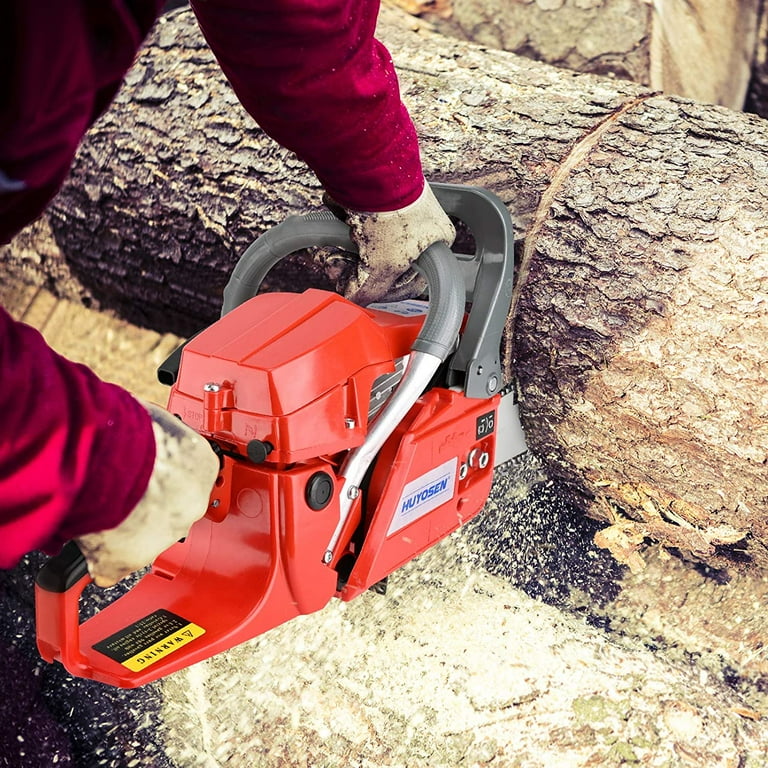
The Surprising Medical Origins of Chainsaws
The Unexpected Beginnings of the Chainsaw
The chainsaw’s origin story is as surprising as it is practical. Contrary to popular belief, the initial use of chainsaws wasn’t for forestry work but for medical purposes, specifically to assist in childbirth. This might seem shocking, but during the late 18th century, chainsaws provided a critical solution to a very serious medical issue—obstructed labor.
Before the advent of advanced medical procedures, childbirth could be a perilous event. Doctors often faced scenarios where babies couldn’t pass through the birth canal due to maternal pelvic structure issues. It was during these desperate times that the chainsaw, a refined alternative to more crude surgical tools, became a life-saving invention.
Scottish doctors John Aitken and James Jeffray are credited for creating a medical instrument in the 1780s known as the “flexible chainsaw”. This device was specifically designed to perform symphysiotomies, a procedure that involved cutting the cartilage of the pubic symphysis to widen the birth canal. The saw’s fine-toothed design allowed for more precise cuts and reduced tissue damage, which was vital when antibiotics and proper anesthesia were not yet available.
The inception of the chainsaw in a medical context underscores the unpredictability of innovation. Its early use in the operating room is a testament to human ingenuity, which has led the chainsaw to evolve well beyond its original intent. Today, it’s difficult to imagine this ubiquitous forestry tool once played a critical role in delivering new life into the world. The invention shows how necessity can drive creativity to unexpected and transformative ends.
Evolving from Childbirth Aid to Forestry Tool
From its harrowing use in childbirth, the chainsaw has come a long way. Initially, this tool was a savior in the medical field. It helped deliver babies when all else seemed bleak. The ingenuity of surgeons turned a dire need into a medical marvel. They reshaped the chainsaw from a woodcutting idea into a life-saving instrument. But it didn’t stay long in the delivery room.
Over time, visionaries saw broader uses for the chainsaw. Its precise cutting and efficiency were too valuable to limit to medicine. As such, the chainsaw found a new home in forestry. The transition was not immediate or simple, though.
The leap from medical tool to logging equipment involved reinvention. Engineers tweaked the chainsaw’s design, making it bigger and stronger. They adapted it to slice through the toughest woods. And so, the modern chainsaw carved its path into the timber industry.
This evolution tells a larger story. It shows how tools can change roles and industries over time. Once a niche medical device, the chainsaw became an essential part of forestry work. And now, it’s impossible to picture any wood-related task without it. The chainsaw’s journey is a testament to human adaptability and the constant quest for improvement.
The Ingenuity of Scottish Doctors: A Medical Breakthrough
In the late 18th century, childbirth posed many risks. Pelvic anomalies often resulted in obstructed labor, endangering mothers and their babies. Options for safe delivery were limited and often dangerous. A Caesarean section, while occasionally performed, was typically a last resort due to high infection rates. In light of these challenges, a ground-breaking surgical tool emerged: the flexible chainsaw.
Scottish doctors John Aitken and James Jeffray envisioned a device that could safely and swiftly assist in symphysiotomies. This critical procedure involved delicately cutting the pubic symphysis to allow babies to pass through more easily during delivery. Their inventive saw, designed with fine teeth on a chain, offered unparalleled precision. This ingenuity was born from a dire need for a safer, more effective solution for challenging childbirths.
The creation of the flexible chainsaw marked a significant medical advancement. Its success exemplified the early integration of engineering into medicine. The keyed innovation by these Scottish doctors not only made the procedure less risky but also paved the way for the future of surgical tools. Consequently, this early form of the chainsaw revolutionized the approach to difficult deliveries at a time when every second and every accurate cut could mean the difference between life and death.
While today’s chainsaws are associated with timber and forestry, this medical marvel underscores a deep history of surgical innovation. It is a testament to the doctors’ determination to save lives, their ability to harness technology creatively, and the lasting impact of their pioneering efforts on both medicine and mechanical tool design.
Bernhard Heine’s Chain Osteotome: A Cutting Edge Invention
The osteotome marked a pivotal moment in surgery. Invented by Bernhard Heine in 1830, this tool impacted how surgeons approached bone operations. Heine’s innovation shared some features with modern chainsaws. Yet, it served a different, more delicate purpose – cutting through bone with care. Unlike the more brutal methods used earlier, the osteotome provided a refined approach. It employed a hand crank to operate the saw, preserving patient comfort as much as possible in a time before anesthesia was common.
Heine’s design boasted a fine-tooth chain, set around a plate and wheel. This allowed for precise cuts that were essential in surgery. It made operations like amputations and cranial entries less damaging. Its adjustable nature meant that surgeons could limit the area being cut. This helped avoid harm to nearby soft tissues. While its cost was high, the osteotome was a symbol of medical progress. Its influence went beyond the price, showcasing a leap in surgical technique.
Despite its advantages, the osteotome was not without its challenges. It demanded a high level of skill to use effectively. Sadly, few could master it as Heine did. Still, this innovative tool stands as a testament to the progress in medical practices of its time. It highlighted a move towards precision and patient care within the constraints of the era’s medical limitations.
Transition to Modern Medical Practices
The journey from chainsaw to modern surgical tools is one of evolution and innovation. As medicine advanced, so did the procedures and equipment. With the discovery of anesthesia and antiseptics, surgeries became safer. The risks of infection decreased. This made C-sections a more viable option for difficult childbirths.
Advancements in medical technology have outrun the need for chainsaws in operative care. Precision tools, laser surgery, and robotic systems now lead the way. These modern practices are miles ahead of the crude chainsaw origins.
The Osteotome, for instance, paved the way for more advanced bone-surgery tools. Today, surgeons use high-tech saws that are more refined. They cut with exactness while protecting patients from unnecessary harm.
Gone are the days of the chainsaw in medical settings. Yet, its spirit of innovation remains. It embodies the relentless push for better solutions in healthcare. The history of the chainsaw serves as a reminder. It shows us where we came from and how far we’ve reached. Medicine now offers less invasive and more precise methods for saving lives.
The transition from chainsaw-based operations to modern medical tools has been pivotal. It has shifted the focus from mere survival to improved quality of care. As medicine evolves, we see a constant strive for excellence. The chainsaw, in its time, was a step on this continuous path of innovation. It is a part of why we can offer such sophisticated care today.
Andreas Stihl’s Revolutionizing Creations
The evolution of the chainsaw took a pivotal turn with Andreas Stihl’s creations. In the 1920s, Stihl, a German mechanic, recognized the power tool’s potential outside the medical field. Stihl envisioned the chainsaw as a game-changer for the logging industry. His determination led to the invention of the first electric chainsaw, patented in 1926. This initial model, built for logging, transformed the way we cut wood. Yet, it required multiple people to operate due to its large size.
Stihl’s ingenuity did not rest with electric saws. He soon followed up with a more powerful gas-powered version in 1929. These pioneering chainsaws marked the beginning of a new era in forestry. Nonetheless, these early versions were still cumbersome. They needed a team to manage them.
It took decades and further innovation to arrive at the single-operator chainsaws we know today. These modern saws are light and efficient, thanks to advancements in materials like aluminum. Overall, Stihl’s early work laid the foundation for the chainsaws that now roar through forests worldwide. For his contributions, Stihl’s name remains synonymous with quality power tools in the industry.
From aiding childbirth to felling giant trees, Stihl’s revolutionizing creations tell a story of transformation. They highlight how one man’s vision can redefine a tool’s destiny. The chainsaw’s journey is a testament to the ongoing quest for better technology. Andreas Stihl played a crucial role in moving the chainsaw into its modern form.
The Chainsaw Through the Ages: A Historical Journey
The chainsaw’s tale is rich and varied. Starting as a medical device, it became a woodcutting icon. Its roots are in the medical field, aiding in childbirth as a last resort. Over time, inventors like John Aitken and James Jeffray found new ways to use it. By the 1920s, Andreas Stihl had reshaped it for forestry.
The chainsaw has changed greatly over the years. Once manually operated, it now roars to life with the press of a button. Early versions needed multiple people to manage them due to their size. Today, we have chainsaws that one person can easily handle.
Why were chainsaws made initially? They served as medical instruments for difficult births. Not for forestry, their use has shifted. The timeline of the chainsaw speaks to human ingenuity. From aiding in life-saving surgeries to revolutionizing the timber industry, chainsaws have proven to be versatile.
Each stage of the chainsaw’s evolution is a leap forward. Think of how we’ve moved from bone-cutting chains to slicing through giant trees. Engineers turned the chainsaw’s concept upside down. They reimagined it for tougher tasks outside the hospital walls.
As we look back on the historical journey of the chainsaw, we can see a pattern. Here, a tool crafted for one purpose finds new life in a completely different use. The chainsaw’s story shows that innovation can take unexpected turns. It reveals the potential for tools to evolve and shape industries in ways their creators never imagined.
From Medical Tool to Modern Woodcutting Technology
The journey of the chainsaw is a tale of re-imagination and versatility. Originating as an instrument for childbirth, chainsaws now stand as a staple in forestry and woodcutting. This transition was fueled by the realization that the technology behind the medical chainsaw could be adapted and scaled for cutting trees.
In the early 20th century, significant strides were made to modify the chainsaw for logging purposes. Patents emerged for machines capable of producing wooden boards and felling large trees. These machines, while large and cumbersome, laid the groundwork for more portable, efficient designs.
Canadian James Shand played a pivotal role in the evolution of the chainsaw, patenting the first portable model in 1918. Though still unwieldy by today’s standards, Shand’s design marked a leap towards the convenience and versatility of the chainsaw.
The breakthrough, however, came with Andreas Stihl’s electrifying invention. In 1926, the German mechanic patented the first electric chainsaw, followed by a more robust gas-powered version three years later. Although these early iterations required multiple operators, they represented a revolution in the usage of chainsaws.
Post-World War II saw rapid improvements in materials and engine design, leading to the one-man chainsaws we’re familiar with today. These advancements made chainsaws lighter, more manageable, and indispensable to the timber industry.
Nowadays, chainsaws are synonymous with woodcutting technology. They’ve grown far from their medical roots, illustrating how a single tool can transform and branch out into new realms. The once life-saving medical instrument has blossomed into a modern marvel that carves through wood with unmatched efficiency. The story of the chainsaw epitomizes innovation, showcasing how necessity can spark the reinvention of technology for entirely new applications.
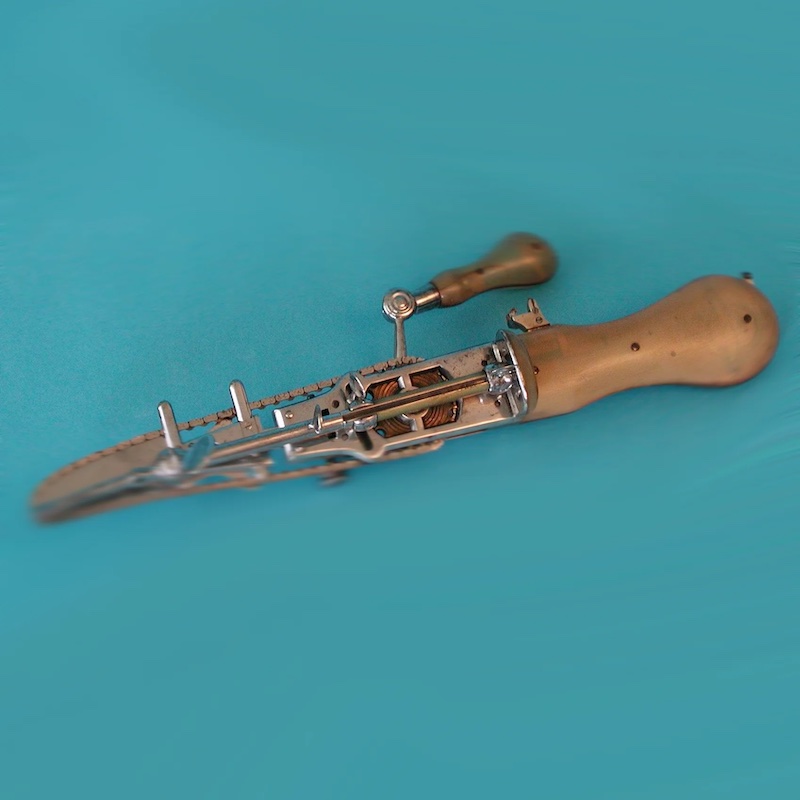
The Unexpected Origin of Chainsaws: From Surgery to Sawmill
The Invention of the Chainsaw: A Medical Necessity
In the late 18th century, difficulties in childbirth led to a medical breakthrough. Often, a baby stuck in the birth canal posed a significant threat to both mother and child. Doctors needed a tool to assist in these hazardous deliveries. The solution was both innovative and unexpected: the early chainsaw. At the time, C-sections were dangerous and often fatal due to the high infection risk. This led Scottish doctors John Aitken and James Jeffray to invent a device for cutting bone with precision and less trauma. Their creation, a hand-cranked chainsaw, aimed to perform symphysiotomies more efficiently. This procedure required cutting the pelvic bone to widen the birth canal. The invention of this chainsaw was a necessary response to the limitations of medical procedures of the era. It minimized damage to mothers during childbirth and improved survival rates. Chainsaws were indeed invented as a medical instrument to save lives in difficult birthing situations. Why were chainsaws invented? Mainly, to provide a life-saving solution when other medical options fell short.
Early Chainsaws in Childbirth: Symphysiotomy and the Osteotome
The first chainsaws were not for wood but for childbirth. Early models helped with symphysiotomy, a surgical procedure. This practice involved cutting the pelvic bone. It made more room for babies stuck in the birth canal. The chainsaw for this use was known as the osteotome. The osteotome had fine teeth and was hand-cranked. It cut through bone more safely than knives or saws at that time. The invention was critical for emergency childbirth situations. Sadly, the procedure still had risks and was quite invasive. However, the osteotome was a step forward in medical tools. It helped save lives when other methods were too dangerous. With this, the story of why chainsaws were invented begins in the medical field.
The Aitken and Jeffray Connection: Contributions to Medical Procedures
John Aitken and James Jeffray, both Scottish doctors, saw a need for medical innovation. Driven by the challenges in childbirth, they focused on symphysiotomy. Before the chainsaw, this procedure suffered from slow, imprecise tools. Aitken and Jeffray’s device aimed to perform symphysiotomies quickly and safely. This hand-cranked chainsaw showed efficiency and precision in cutting pelvic bones. With their invention, they brought a significant medical contribution. Their chainsaw helped more babies and mothers survive difficult births. The tool’s design minimized injury to surrounding tissue. It was smaller and more controlled than previous options. Its impact was notable in the realms of obstetrics and surgery. Over time, it informed the development of other surgical tools. Aitken and Jeffray’s work underscores why chainsaws were invented for medical, not timber, purposes initially.
Bernhard Heine’s Osteotome: The Predecessor to Modern Chainsaws
Bernhard Heine, an orthopedic technician turned surgeon, introduced a groundbreaking innovation in 1830. His creation, the chain osteotome, transformed medical procedures. Unlike earlier versions, Heine’s osteotome featured a hand-cranked chain. It cut through bone with impressive efficiency and speed, lessening patient suffering. Its design included small teeth similar to modern chainsaws. The osteotome revolutionized amputations and made intricate surgeries possible.
Why chainsaws were invented goes back to Heine’s osteotome. It aimed for precise cuts and minimal tissue damage. This piece of medical equipment had a major flaw, though. It was costly. Only a few surgeons, Heine included, truly mastered its use. Despite this, the chain osteotome inspired the chainsaws we know today. It showed how a medical tool could evolve for commercial use in timber.
The resemblance to today’s chainsaws is clear. Heine’s osteotome had an endless chain and sharp edges. These features are key to cutting wood quickly and cleanly. A look at his creation helps us understand why chainsaws were invented with medical roots. Over time, this medical device set the stage for the modern chainsaw’s power and utility in the forestry industry.
The Evolution from Medical to Forestry Use: A Shift in Applications
When we think of chainsaws today, forestry work often comes to mind first. But initially, chainsaws were not developed for such purposes. The invention of chainsaws started from a medical necessity – aiding childbirth. The initial shift from medical to forestry use marked a new chapter in chainsaw applications.
Over time, the practicality of chainsaws adapted from medical tools to forestry became evident. Engineers recognized the potential to cut trees with such devices. Gradually, designs emerged to handle larger blades and the power necessary for woodcutting. This led to the birth of the forestry chainsaw.
The evolution began not long after the introduction of the chain osteotome. Manufactures saw the method’s effectiveness in bone cutting. They envisioned similar approaches for timber work. Loans were taken and patents filed during the late 19th and early 20th centuries. Advances included the Chain Sawing Machine and the Endless Chain Saw. These innovations targeted wood processing and logging, unlike their medical ancestors.
From the surgical theater to the heart of forests, chainsaws found a new purpose. They transformed into tools of immense power and capability for timber. Inventors worked tirelessly. They aimed to improve the design and efficiency for woodcutting. This effort turned chainsaws from an exclusive medical instrument to an essential for lumberjacks.
The journey of chainsaws illustrates how needs in one field can spur innovation in another. It also answers the question – why were chainsaws invented? Not just for medical emergencies, but for the versatility and problem-solving potential they offer across various applications.
The Role of John Muir and Samuel J. Bens in Chainsaw Development
John Muir, an inventor, and Samuel J. Bens, a logger, both played roles in the evolution of chainsaws. Their work bridged the gap between medical instruments and forestry tools. Muir’s vision for a saw that could assist in logging tasks foreshadowed the future of chainsaws. His design in 1897 though, was cumbersome. It was a large machine needing a crane, which limited its use.
Samuel J. Bens took inspiration from earlier chainsaw concepts. In 1905, he sought a patent for a ‘endless-chain saw.’ Base on Heine’s osteotome, this first design remained impractical. Yet, it set the stage for portable versions.
These early developments were vital. They led to the invention of chainsaws as we know them. Even though Muir and Bens didn’t perfect the design, their ideas pushed others to innovate. Chainsaws moved from medical settings to the thick of forests as indispensable logging tools.
The Revolution of Portable Chainsaws by James Shand
In the quest for timber mobility, the chainsaw’s evolution took a huge step forward. The year 1918 marked a breakthrough by Canadian millwright James Shand. Shand created the first portable chainsaw, which was a game-changer. Unlike previous models, Shand’s design aimed to bring practicality to forestry work. His chainsaw, though still bulky, enabled movement from tree to tree with less effort. Shand’s invention was for those who worked away from fixed machinery. It let loggers cut down trees directly in the forest. While it was called portable, this early version was large and heavy. Users found it to be less portable than hoped for. Patents filed by Shand showed a commitment to enhancing the chainsaw. Over time, design improvements made the chainsaw lighter and more manageable. Shand’s initial portable chainsaw led to more accessible, powerful models. This invention paved the way for future advances in chainsaw technology. It answered the growing need for efficient, mobile woodcutting tools.
Andreas Stihl’s Innovations: Creating the Modern Chainsaw
Andreas Stihl was pivotal in the modern chainsaw’s development. Stihl, a German engineer, saw potential in the chainsaw’s design. He utilized its cutting principles for logging. In 1926, he patented the electric chainsaw. Soon after, in 1929, he invented a gasoline-powered model. Both chainsaws needed two people to operate because of their size.
Stihl’s work didn’t end with these models. He relentlessly improved his chainsaws. World War II ended and materials like aluminum became available. Stihl used them to make his chainsaws lighter and easier to handle. By the 1950s, his design allowed one person to effectively use a chainsaw. This revolutionized the forestry industry.
The innovations answered why chainsaws were invented. They provided powerful tools for woodcutting. Today’s timber industry owes a great deal to Stihl’s work. His name became synonymous with quality chainsaws. His company is now one of the largest chainsaw manufacturers.
Stihl’s vision made the chainsaw a forestry staple. It was once a medical device but now a key tool for lumberjacks. His electric- and gas-powered saws set the standard for modern chainsaws. Thus, the chainsaw’s story from surgery to sawmill is complete. From aiding childbirth to felling trees, this tool has a complex history. Stihl’s ideas filled the need for efficient and portable woodcutting equipment. Their utility shows in various applications across the forestry sector.
